
Live, Virtual and Constructive Identity of the Italian Army
Stability Policing: towards new Operational Capabilities
Technological Innovation and National Security

EDITOR’S NOTE
by
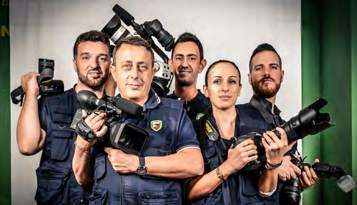
Dear reader, this issue marks an im portant and challenging period for NRDC-ITA. The Headquarters is in the very middle of its second year as a stand-by Joint Task Force (JTF) and is facing, at the same time, training events on the path to validation as a Land Component Command (LCC), the role to be covered in 2018. NRDC-ITA is conducting a consistent number of activities aimed at improving its capability to properly employ combat units, planning the execution of the full spectrum of military operations and testing the digitized command and control systems.

“ER” issue, in fact, is honoured to host an article by Maj. Gen. Maurizio Boni, who as Ce.Si.Va. Commander explains the roles and tasks of the Centre in support of testing the capabilities of complex headquarters like NRDC-ITA. You will find this and much more through the pages of the magazine, which represents an extension of another dynamic communication tool: the official web site of the Headquarters, www.nrdc-ita. nato.int.
NRDC-ITA Commander
Lt. Gen. Roberto PERRETTI
EDITORIAL BOARD
Editor in Chief: Col. ITA (A) Gianluigi ARCA
Editors : Lt. Col. ITA (A) Vincenzo
SCHETTINI, Maj. GBR (A) Christopher DAVIES
Assistant Editor and Graphic Designer:
Cpl. ITA (A) Chiara MONTI ......................
Assistant in Imagery and Post Production:
WO1 ITA (A) Francesco CIVITELLI
Photographers: Cpl. ITA (A) Raffaele SANSEVERINO, Cpl. ITA (A) Mattia RUSSO
Web: WO ITA (A) Italo BOATO
The everywhere rapidly is the autorized official pubblication of NATO Rapid Deployable Corps, Italy. All editorial content of the everywhere rapidly is prepared , edited and approved by the NRDC -ITA Commander, at “ Ugo Mara” barracks, via per Busto Arsizio, 20 - 21058 Solbiate Olona , Varese, Italy.
The Everywhere Rapidly is published by the Public Affairs Office. Contents of the Everywhere Rapidly are not necessarily the official views of, or endorsed by the North Atlantic Treaty Organization and the Nations thereby rapresented.
FROM THE STAFF
• The eNRF Support Concept Seminar at NRDC-ITA
• Stability Policing: towards new Operational Capabilities
• Public Affairs to become independent branch within HQ!
• NRDC-ITA CIS drives NATO technological innovation!
•
• Live, Virtual and Constructive Identity of the Italian Army
Security
But the capabilities of the HQ are the result of the daily work of a complex structure, which also involves national assets, such as the Italian Army Simulation and Validation Centre (Ce.Si.Va.). This
Together with the social media platforms accounts, the website plus the magazine provide a very good angle on our daily activities. Follow us on all of them, and have your insight from a priviledged vantage point.
Thank you for your kind attention and enjoy your reading!
All intellectual property rights, including copyright in the content displayed on the everywhere rapidly, belong to their respective owners. All material and information including comments, are governed by the doctrine of fair use. The Publication and the content may only be used for lawful purposes. For this purpose alone one may print out, reproduce, or photocopy as needed.
The editor reserves the right to edit all submissions for style, brevity and clarity.
Printed by Grafica Metalliana
COMMAND GROUP
• A new leadership for the NATO Rapid Deployable Corps - Italy
• The new Command Sergeant Major of NRDC-ITA
SPORT BOARD COMMUNITY
• NIWIC solidarity for the victims of Central Italy earthquake
• NRDC-ITA on two wheels at EICMA 2016
• A champion among NIWIC members: Mrs. Valentina Superchi wins the Nordic Walking Italian Championship 2016
攀
Col. ITA (A) Gianluigi ARCA CONTENTS
Mountain
on
4 6 8 12 14 20 28 30 34 36 40 41 42
Technological Innovation and National
• Exercise Eagle Triglav • NRDC-ITA
Military Training
Dolomites
The eNRF Support Concept Seminar at NRDC-ITA
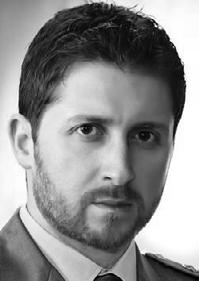
TCapt. ITA (A) Giuseppe MANNINO, assigned to NRDC-ITA in July 2015, Staff Officer J4 OPS Coord, Support Division
he NATO Rapid Deployable Corps Italy Headquarters hosted “The Enhanced NATO Response Force (eNRF) Support Concept” Seminar from the 3rd to the 4th of November 2016, under the chairmanship of the Chief of Support Division, Brigadier General Luca FONTANA.
As part of a number of events established to achieve the proper direction and understanding on specific topics associated with the most recent NATO transformations, the seminar represented an important opportunity to explore possibilities for enhancing and strengthening our cooperation among NATO entities. The seminar, conducted over two days, consisted of briefings and lively discussions, focusing on the enhanced NRF Support Concept, and provided an excellent forum to achieve a common understanding of the Support Division’s role in eNRF operations. Representatives of JFC Brunssum, NRDC-Spain, ARRC and NFIU Poland actively contributed to the event as pioneers in the recent eNRF concept. As a result, all participants were encouraged to share ideas, initiatives, lessons learned and “best practices”, as well as to further discuss common issues related to the delicate context of support and possible challenges emerging from the implementation of relevant NATO doctrine.
The recent past has been demanding in terms of the various threats on the international security environment level, and is posing some challenges to the transformation and adaptation process of the Alliance.
At the 2014 Wales Summit, NATO Allies agreed to enhance the capabilities of the NATO Response Force (NRF) in order to adapt and respond to emerging security challenges. It was agreed to incorporate a Very High Readiness Joint Task Force (VJTF) within the overall NRF structure, increasing the size of the NRF and providing NATO with a highly capable and flexible air, land, maritime and special forces package capable of

deploying at short notice when tasked. If activated, the force will be available to move immediately, following the first warnings and indicators of potential threats, before a crisis begins, to act as a potential deterrent to further escalation. In order to enhance the responsiveness of the Alliance, facilitating the rapid intervention of the VJTF, small coordination nodes, called NATO Force Integration Units (NFIUs), have been established to enable deployment and sustainment activity of forces.
As new stakeholders for new logistic challenges, NFIUs are working in conjunction with host nations in order to ensure that the VJTF can deploy to an assigned region within two up to seven days. Each NFIU will provide a vital link between national forces and multinational NATO forces, and will have a key role in planning, exercising and assisting potential reinforcements. The NFIUs will be controlled by the Multinational Corps Northeast HQ in Szczecin (Poland) and the Multinational Division Southeast HQ in Bucharest (Romania), established along with a Standing Joint Logistics Support Group Headquarters (S-JLSG HQ) at SHAPE in Mons (Belgium).
The Warsaw Summit 2016 consolidated the NRF concept, and introduced a further emphasis on a forward presence in frontline NATO States. Work is ongoing in ensuring coherence between NATO’s response and forward presence concepts.
As a flexible tool to respond to common security requirements, NRDC-Italy is continuously adapting and revising its structure and professional standards, to fit with its roles in accordance with the Readiness Action Plan (RAP). In this context, where the responsiveness of the Force remains one of the most important factors to enhance credibility of the Alliance, the support seminar was the right occasion to discuss the concepts underpinning the support capabilities of NRDC-Italy in its role of NRF Land Component Command (LCC), as
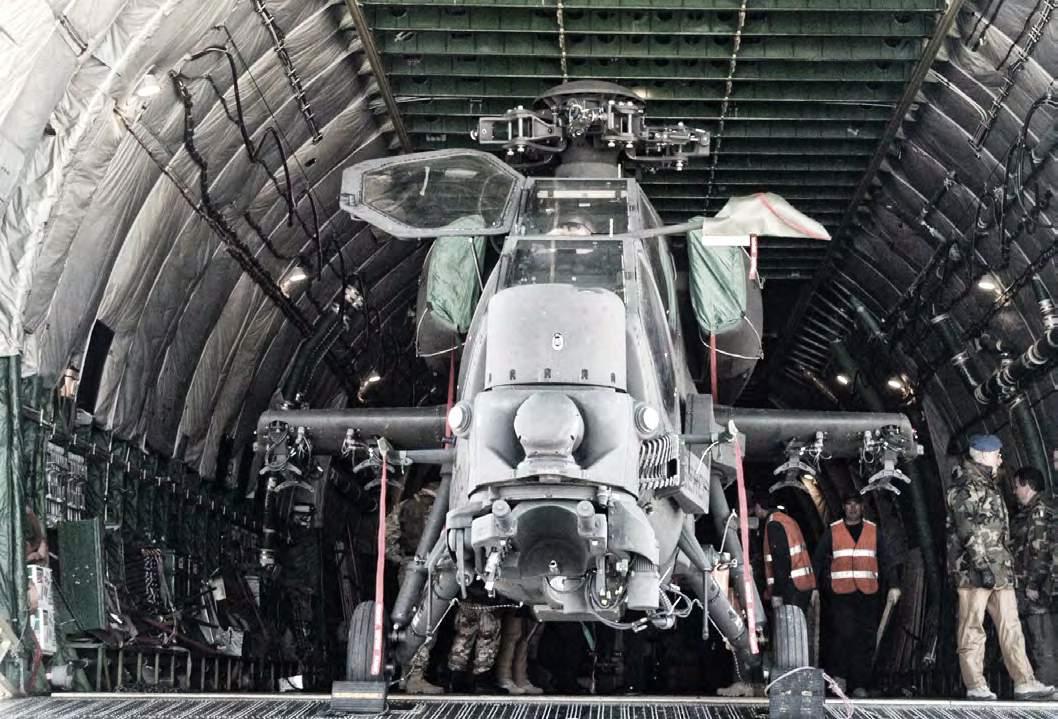
the HQs takes this responsibility starting from January 2018.
The implementation of the recent eNRF and VJTF concepts is challenging, and NRDC-Italy is eager to face this new period with the latest information available among NATO entities. To cope with such commitments, NRDC-Italy needs to remain updated on the eNRF and VJTF emerging concepts, in particular those aspects related to the Command and Control (C2) structure and relationships, in addition to the responsibilities of every single actor taking part in eNRF/VJTF operations. In order to meet the demanding requirements related to the provision of support in NRF operations, it is very important to clearly delineate the roles and responsibilities of logistic stakeholders along the entire C2 chain. The impact of all actors in the logistic environment needs an accurate evaluation in order to correctly assess the effects that the new changes generate.
Conclusions
The main purpose of the seminar was to gather relevant representatives belonging to the support capacities, for exchanging ideas, initiatives, lessons learned and “best practices”, as well as to discuss further challenges and issues related to the Alliance transitioning from the doctrinal and theoretical level into the practical field. The event facilitated attaining a common understanding on the current eNRF support concept status, concerns
and challenges, promoted common situational awareness within NATO support community and spread a clearer understanding on Logistic Command and Control relationships within the NRF environment. Early coordination between all stakeholders involved in the eNRF process was made crucial during the seminar. In addition, the importance of multinational solutions to help solve logistics shortfalls was emphasized as a major key to mission success. For this reason, the strategic level of the Alliance needs to work more on making agreements among the nations on the expected level of support.
Last but not least, the eNRF concept must be as flexible and responsive as possible to the changing environment, in order to meet all mission requirements. It is of paramount importance to adapt and be ready to react to any changes, as well as essential to be fully aware of the appropriate logistic support to achieve operational objectives.
The topic of “support” remains more than ever at the heart of the successful conduct of missions and operations by the Alliance. The best way to describe the importance of support capabilities is the quote of U.S. General Dwight D. Eisenhower: “You will not find it difficult to prove that battles, campaigns, and even wars have been won or lost primarily because of logistics.”

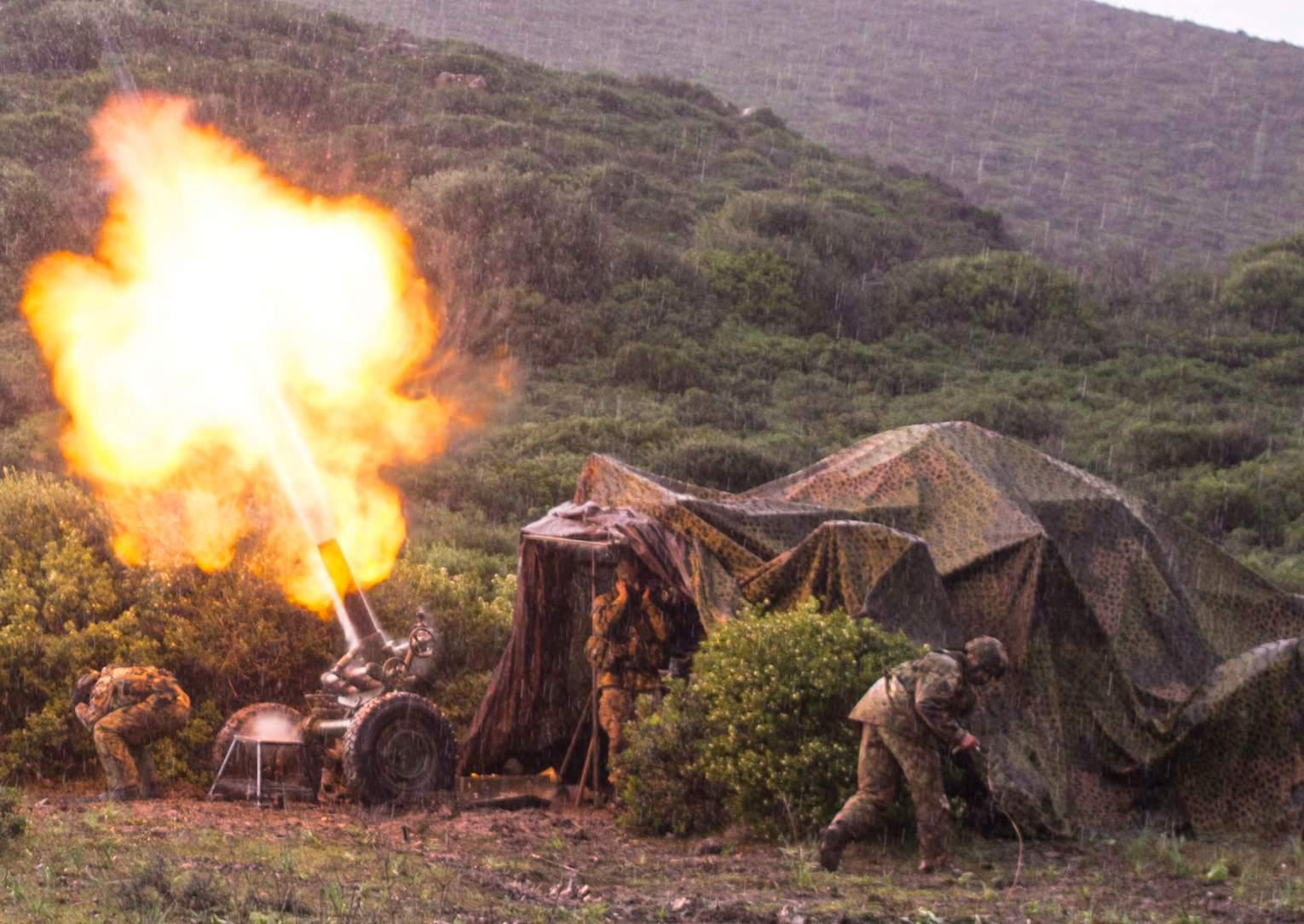
4 FROM THE STAFF 5 攀
Italian Army Aviation personnel preparing an attack helicopter A129 “Mangusta” on a cargo airplane
Stability Policing: towards new Operational Capabilities

Mass migrations, new technologies evolution, incumbent cyber-threats and social engineering, natural disasters, weapons of mass destruction, sprawling urbanization, transnational and organized crime and unaccountable and ineffective governments are generating persistent instability and threatening new conflicts to the world. These emerging factors have been generating staggering uncertainty and insecure environments and a requirement for a new concept, demanding a new body of specialized assets capable of an increased operability in extreme uncertain environments.
The NATO Stability Policing concept development and experimentation project, devised by Lt. Col. ITA Carabinieri Vittorio Stingo (Stability Policing Subject Matter Expert), recently established by the Supreme Allied Command of Norfolk (U.S.A.) is aimed at filling this
gap. The project has been carefully supervised by the Carabinieri Headquarters in Rome, which also helped create the Allied Joint Doctrine 3.22 “Stability Policing ”. The project is going to endure one year and will embrace four workshops (Rome 24-27 Oct 16, Bucharest 27 Feb- 3 Mar 17, Amsterdam 15-19 May 17 and Vicenza 25-29 Sept 17) to foster this new concept and empower NATO with a new capability and capacities.
The Rome workshop, recently held at the Radisson hotel, has achieved resounding success convening 120 international experts, military, civil servants and police officers (among which many Carabinieri) from over 42 worldwide organizations and institutions. Some of the main highlights of the workshop have stressed what Stability Policing future operational goals should target: border control, counter terrorism and hybrid activities. Notably, from the workshop came the spiraling requirement that

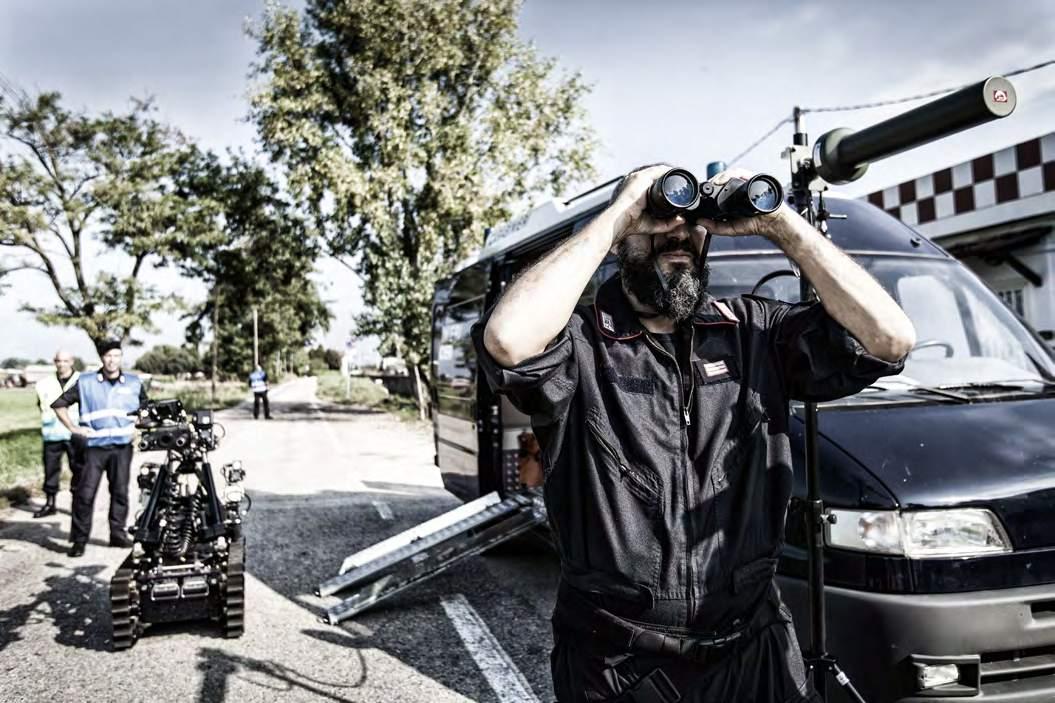
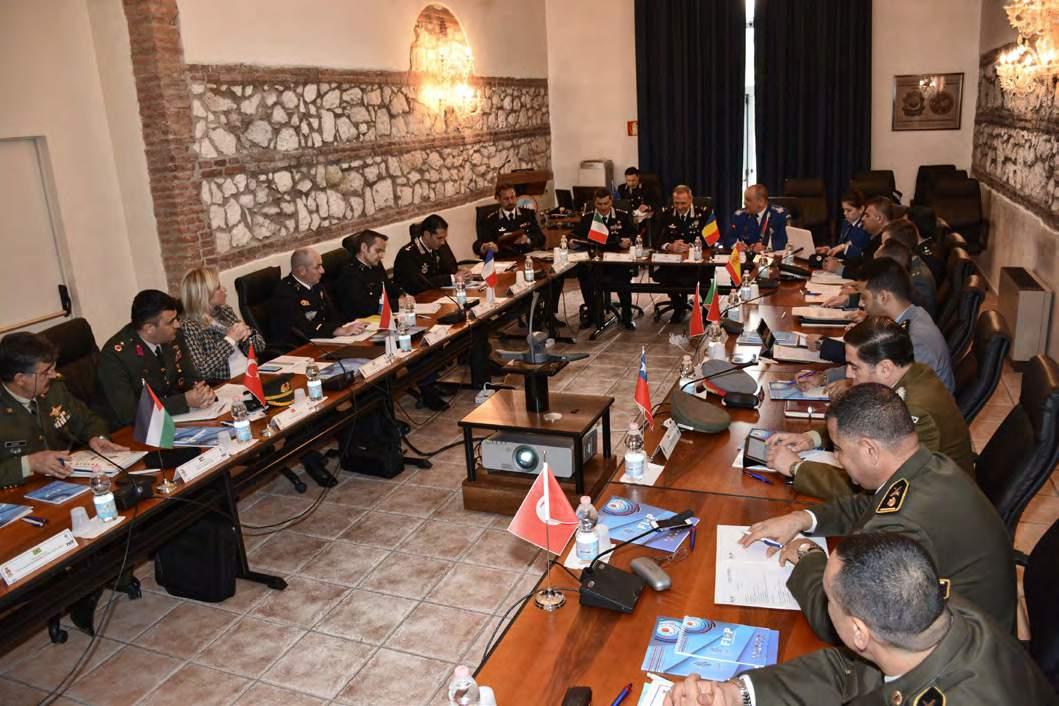
and justice system is a key issue in crisis states or conflict affected environments. Remarkably, the police are, more than usual, the main Government interlocutor to citizens and in addition are the institution that most affects the lives of the population. As it exerts a pivotal role in leveraging the relationships with the lives of the citizens, Police can have exceedingly positive or painfully negative effects. As the Afghan theatre has shown, if there is a lack of trust between the public and the police (ANP) that is too military-oriented and inadequately equipped to solve crimes, this provokes a deterioration of the security situation in the first place. Therefore there is a need of police reforms strategies that are more civilian police oriented, aimed at community policing, administrative and leadership roles and able to provide a safe and secure environment, economic well-being and freedom. For all the said reasons, it is critical that local police gain the trust and confidence of people through appropriate and specialized training in order to effectively respond to the needs of and develop the society in terms of security and prosperity. An unaccountable, ineffective and repressive police force, often associated with corruption (bribes, mismanagement and embezzlements) can trigger violence and fuel radicalization. NATO Stability Policing will be playing a decisive function in many respects in the forthcoming operational campaign horizon. Another pivotal take away from the 4 days’ work was the need to have common principles, understan-
ment and procedures within all the Stability Policing
provement of security, rule of law, the upholding port of the civilian population in affected countries. A further broad resolution stems from this remarkable purpose: Partnering. A particularly important aim in the workshop was not only fostering a community of interest that will be called upon to discuss and develop the aforementioned main topics and those to come in the ensuing workshops, but also to promote cohesion among partners. NATO missions have seen so far the involvement of many national players and other stakeholders that, with external partners and participants, have contributed to the operations. Future campaigns will require more tight-knit cohesion of very empowered and multi-fields actors ranging from industry, international organizations, NGO’s, international think-tanks. Partnerships are in particular needed across the criminal justice chain supporting the investigations (software and other technical means), the activities of public prosecutors and judges (mentoring and advising these high officials on a smoother cooperation with the local police and to manage files with international standards), the prosecution services and finally the correctional facilities (gender responsive and with socially acceptable standards).
All the latter tasks can be performed other than by PFMS (Police Forces with Military Status) also by other civilian, defence contractors and other international organizations, requiring the support and critical commitment of the industry (engineering, manufacturing and the state of the art of technical development).


FROM THE STAFF 7 攀
Lt. Col. ITA (Carabinieri) Massimo PANI is the chief of the NRDC-ITA Stability Policing (SP) Section. He is one of the coordinators in the Supreme Allied Command Transformation SP concept development and experimentation project.
Photo credit: NATO SPCoE
Photo credit: NATO SPCoE
A police counter explosive team
The NATO SP CoE Steering Committee
Public Affairs to become independent branch within HQ!
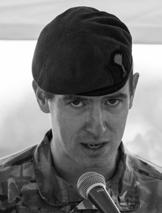
AMaj. GBR (A) Christopher DAVIES, Assigned to NRDC-ITA in May 2016 as Public Affairs Office planner/ briefer
s of Jan 2017 Public Affairs will not be affiliated to any division within the NRDC-Ita and will stand alone.
Of course, this is not the case and most of you with an interest in the structure of the headquarters will have carried on reading to find out more. However a great majority of impartial readers will have read the title and headline only, digesting it as fact before passing onto the next article. This represents the ease with which disinformation can be spread. Where misinformation is merely the dissemination of incorrect information, disinformation is the active attempt to spread false information. This is not to be confused with propaganda which is ‘information, especially of a biased or misleading nature, used to promote a political cause or point of view’. The use and effect of disinformation is an extensive topic on which books have been written therefore this article will only provide a brief insight into the issue. Countering disinformation falls, in different ways, to a combination of branches within this headquarters, be it StratCom, Information Operations or Public Affairs. Here we will focus on how Public Affairs can tackle the problem, giving a brief overview of the problem followed by suggestions for dealing with the issues that are raised. Informing audiences of the correct version of events as part of an accepted narrative is relevant at every level of operations, be it tactical, operational or strategic. Given the speed at which information can flow over social media, a messaging mistake at the tactical level can have strategic consequences. Much discussion on the future of warfare focusses on the growing role of information. Information warfare is employed widely by states such as Russia, China and terrorist organisations such as Da’esh, all of whom use disinformation to influence their audiences. Disinformation is not a new phenomenon. It has been a key aspect of warfare since man first took up arms. It is essentially deceitful messaging. The spread in recent years

of internet, mobile phone ownership and social media has accelerated the dissemination of information and made it more relevant to us all. What might have been dismissed in the past as lies cannot now be dismissed so easily given that social media allows it to gain traction across a wider audience and helps it to be reinforced more quickly until it becomes the accepted version. The importance of countering disinformation has been recognised at the highest levels. The US Congress is introducing a bill specifically aimed at countering foreign disinformation - The Countering Information Warfare Act of 2016. Recent political events in the West have highlighted the importance of messaging, whether the message is true or false. In these recent examples, those who have focussed on the truth have not been as effective as those who said what they knew the audience wanted to hear, true or not. This is partly because the truth tends to be explained in a matter of fact manner, appealing to the logical part of the brain. Those who spread disinformation do so by appealing to the emotive part of the brain which can result in a more passionate reaction by the audience. These events have also reinforced the term ‘post-truth’ which refers to a situation where objective facts are less influential than emotional appeals. The rise of the term is such that Oxford Dictionaries have declared it their 2016 international word
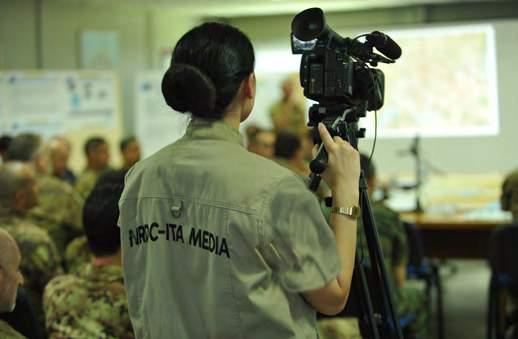
of the year. For a branch like Public Affairs, whose role is to communicate accurate information, surviving in this environment becomes an uphill struggle. Part of knowing how to operate in a disinformation environment is understanding how the information out there can gain credibility amongst an audience. There are several factors which influence how quickly a piece of information is picked up by a group and believed. Firstly, if others in your peer group believe the information, then you are more likely to believe it. This effect is exacerbated by the tendency of social media to tailor news feeds to the user, meaning that there is less opportunity for an individual to be exposed to views contrary to their own. Secondly, the information should be partly believable. If it is outrageously unlikely then it is less likely to be believed. Finally, the source of the information is important. If it is a respected source it will be more believable. Obviously, in this case, perceptions of a respected source will differ widely and in the case of political events in 2016 previously respected sources, such as broadsheet newspapers, have turned out to be less influential than expected. The importance of being a trusted source is particularly relevant to Public Affairs - once the trust is lost, it will be very difficult to regain. It is for this very reason that Public Affairs should not be involved in propaganda and should make every effort to ensure its information is factually correct and presented as objectively as possible. For example, once an audience has faith in the veracity of the information provided by an LCC in the form of its Public Affairs
branch, it is more likely to use the information provided as its point of reference. While the role of Public Affairs is not to specifically counter every piece of disinformation that appears - otherwise it risks becoming solely the voice of disagreement - it can tailor the delivery style of its messaging to compete with the disinformation. The best method for countering disinformation is to be pro-active, not reactive. On the basis that the emotive is more effective than the purely factual, our main messages, where possible, can be disseminated in the form of a story. This engages the audience and invites it to take an interest in the outcome of the story, taking it on a journey. If the story is strong enough it will be able to to withstand the barrage of disinformation that circulates around contentious events. While StratCom outlines what the story should be, Public Affairs is responsible for how it is delivered. Obviously care needs to be taken to make sure that these stories are based on fact and not completely biased otherwise they run the risk of becoming an info ops product and public affairs loses its credibility. Stratcom, Information Operations and Public Affairs will all have different angles on their approach and response to disinformation. At the same time, these responses should be co-ordinated in order to achieve the greatest impact. Different adversaries will require different responses. If we lose the information war, then we lose the support of the populations who we rely on to support our war fighting effort.

8 FROM THE STAFF 攀 9
Internal communication activity at NRDC-ITA
“Home Station Training: new technology in support of our troops”
“The Army of the future requires the capability to train units in a tough realistic environment, in a flexible scenario, where the threat and Operational Environment (OE) change continuously and provide trained and ready units capable of conducting missions across the whole range of military operations. Italian Army is now focused on creating a full spectrum Operational Environment capabilities and learns experience to prepare units, for unspecified future combat scenarios, where the global security environment remains volatile, uncertain, and complex”.
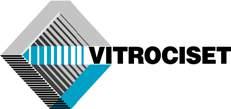
Informative advertising by Vitrociset S.p.A experience
Today, the biggest drivers of Army readiness are in personnel, equipment and training, where the last one topic must be adequate to the current needs: save money, save time on Training and save lives in combat
These difficulties brought by cost concerns and physical distance, can now be solved by new technologies:
Home Station Training is the new “Training project” developed and supported by Vitrociset experience, composed of immersive sensors, to equip soldiers under training using real weapons and platforms in a synthetic scenario, exercising units anytime everywhere.The
training combat scenario. A breakthrough in military simulation, based on the most performing engines enhanced by dedicated hardware, where zero infrastructure, train on real vehicles and bring your own weapon (no mock-ups needed), on the spot planning and mission rehearsal; fully deployable, easily scalable and networkable, configurable for dismounted soldier, ground and air vehicles, Live and Virtual training integration capable and NATO certified for type I, II and III controls (both night and day), represent the most important features. A key component of the Home Station Training is the Battlefield Management System (BMS), which manage

users go through an integrated experience being able to use all the on-board interfaces and ancillaries. All the data collected by sensors feed a dedicated control unit, working stand-alone or interconnected within a site or between sites interconnected. Therefore, it is possible to be part of an integrated and federated training scenario. The federation can be extended to any units, and can be extended simultaneously, to a Joint and Combined
the planning activity that can be directly leveraged into the virtual training. The Battlefield Management System provides a deep planning capability that enables a wide range of units, to plan on the field with a stunning precision and proficiency. Maps, elevations, fields of fire, danger close evaluations, 3D area assessment could be performed with the power of one touch. All the planned data can be easily shared and imported/exported
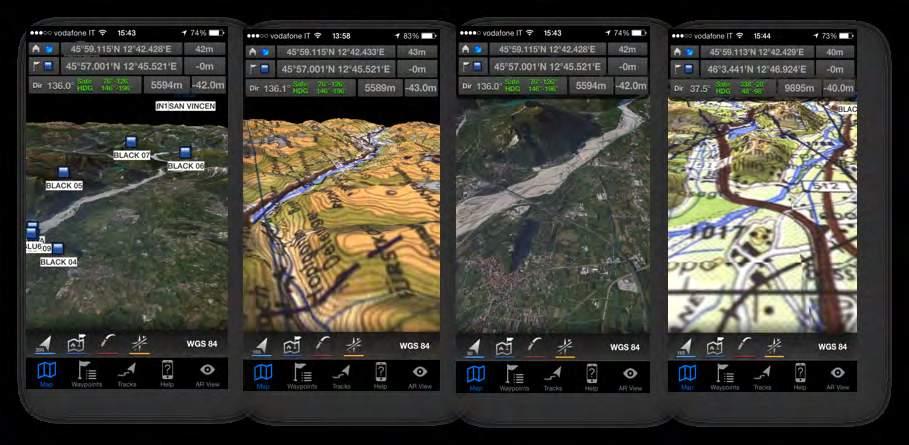
to different channels. Whatever has been planned, can be rehearsed. All the planned data will follow operators on the battlefield with that will record all tracks and activities on the terrain. During live operation on the battlefield, the BMS, will store all the part of the executed data and, once back to the base, an immediate After Action Review (AAR), could be conducted based on real actual data and the results may be immediately imported into the Lessons Learned/identified process. New technology will be able to provide also a Planning and a Mission Rehearsal Execution using a Control Holo Table capability, integrated within Battlefield Management System. Live, Virtual, Constructive Integrating and Federated architecture systems, will connects the posts’ tactical communications systems, with the simulator training, bringing a new level of situational awareness to the Army training common picture. Units in training at different installations, will be able to train together simultaneously.The whole Operational Cycle (Training - Planning - Mission Rehearsal - AAR), will represent a singular, shared, Live, Virtual and Constructive (LVC) training common scenario, where participants, could interact with each other as though they were in
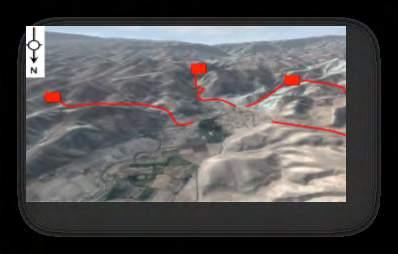
the same physical space. Home Station Training will play a primary role in the Transformation of Training, allowing the units to practice its tactical skills, facilitating development and refinement doctrine, Tactics, Techniques and Procedures (TTPs), emphasizing combat drills teamwork, improving readiness for leaders and units as well, and last but not least:
Training our troops as they fight!
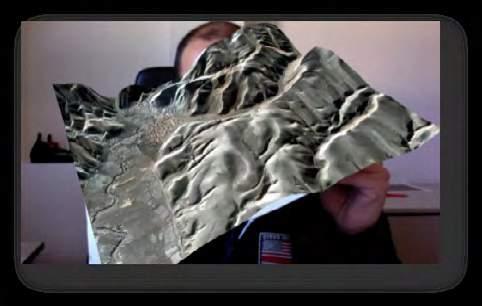
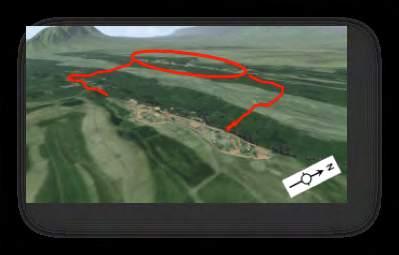 Home Station Training platforms using an Integrated and Federated combat scenario
Home Station Training Battlefield Management System
Integrated Combat Training System: Mission AAR on MRA
Integrated Combat Training System: Holo Table
Home Station Training platforms using an Integrated and Federated combat scenario
Home Station Training Battlefield Management System
Integrated Combat Training System: Mission AAR on MRA
Integrated Combat Training System: Holo Table
NRDC-ITA CIS drives NATO technological innovation!
First amongst the NATO community, NRDC-ITA J6 designed and acquired a series of highly-portable deployable data centres providing a Command with all of the computational capabilities to easily support a huge number of C2 Systems and FASs.
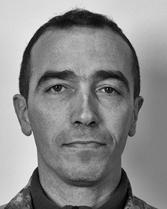
Maj. ITA (A) Domenico D’ALO’, assigned to NRDC-ITA in 2012, responsible for the development of Communication Information System projects
In a nebulous environment full of several security risks, computational speed matters! Security employees expect operational products and CIS services to be instantly available through whatever channel they choose. Within a daily Cyber Defence scenario, “Bad Guys” and new clever competitors apply a different mind-set to refine threats and deeply exploit information systems. This high technology density of the operational environment requires NATO to be always aligned with forefront technologies, enhancing the dissemination of CIS best practices and preventing operations from overstepping the risk threshold. As technology leader within NATO, CIS offices have the tremendous opportunity to be relentlessly proactive in identifying how technology can create new value for the core business of Units and HQs. Daringly, NRDC-ITA J6 proves to have insourcing skills and talents to make sense of an increasingly complex and ever-changing operational landscape, thanks to the good relationship with the leader of most appreciated technology industries.



Having a wide visibility across the core process of the Command, J6 has been ideally placed to be innovation champion, identifying and exploring forefront technology on the shelf. Merging the most suitable technology with the proposed operational requirements stimulates new Functional Area Sy-

Collaboration: Every partecipant in the process must understand the entire process, and their contribution.
Sinergy:With a successful implementation,people are able to collaborate effectively and efficiently drive results. Automation: Technology should support the process and eliminate repetitive or tedious tasks.
Analysis: Technology should automate tasks or improve work-flow, enabling staff to improve results
stem opportunities within a cross-functional domain. New demanding NATO operational concepts dictate the capability of providing rapidly deployable CIS assets, a new catalogue of smart IT services and appropriate Command & Control arrangements. NATO Commanders need a single identical display of relevant operational information shared by more than one Command Post. In one word, they require a system able to provide an appropriate Common Operational Picture summarizing information such as position of own and enemy troops, position and status of important infrastructure (such as bridges and roads) in a single framework guaranteeing a clear battle-space situational awareness. Thus, CIS traditional infrastructure risk to be not tailored enough. For that reason, Information Technology capacity process needs to be run associating best resources to the proposed requirements. The real challenge is to align essentially the most demanding computational needs with the best CIS available solutions on the market, facilitating collaborative planning. In CIS terms, Key words are scalability, resilience, modules & interoperability, but the final goal is to inject the most appropriate technology, supporting processes and executing people. As a matter of course, from a business perspective, technology is one of the core elements driving the NRDC-ITA staff to the achievement of goals and the accomplishment of the mission: “to be prepared to deploy as a Corps, Land Component Command or Joint Task Force HQ for Joint Operations (Land Heavy) under NATO, EU or a coalition command, to conduct or sustain missions throughout the operational spectrum, both within and beyond NATO’s Area of Responsibility for the collective defence of Alliance territory or in pursuit of Alliance, EU or coalition security interests”. As a critical asset, rethinking CIS operational strategies

PEOPLE, PROCESS and TECHNOLOGIES – The three elements for a successful working model.
and redesigning away from traditional IT infrastructure models, J6 Project Officer conceived a new portable DATA Centre model to operate and thrive in a complex Joint environment evolving NRDC-ITA CIS capabilities through great digital outcomes. This tangible answer has been the first within NATO community to this requirement and NRDC-ITA is proud of that! This DATA Centre offers all the flexibility and the agility to respond to the changes in battlefield requirements quickly whether additional modules, with the entire facility growing and changing to meet current demands. Moreover, independent cooling capacity and CISCO blade technology enhance the upgrade and the expansion whilst the CIS infrastructure still remains fully operational. Even if it preserves all forefront capabilities for an innovative system, it is portable, handable and internally cooled with reference to the basic MIL-Specification. All the design effort has been processed within J6 Project Section, based on the experience “boots on the ground” and a wide investigation of proposals coming from national and international best suppliers. The staging of the final product has been fulfilled with the support the Italian Army General Staff and the Italian Defence Telecommunication Procurement Directorate, which delegated to NCIA (NATO Information Communication Agency) for the ac-
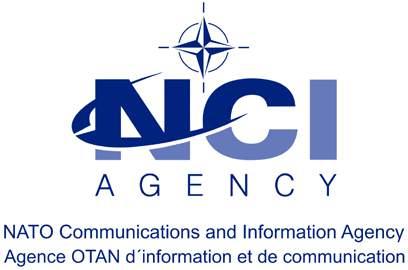
quisition procedures. Furthermore, an Italian firm, ITALTEL, has been selected for the provision of the complex system among more than 250 companies belonging to the 28 member countries of the Alliance. Thus NRDC-ITA staff and 1° Signal Regiment technicians had the opportunity of following all the stage of the project, constantly advising civilian partners with its specific skill. This deal generates a great synergy recognizing the opportunity to deliver the final product in a very competitive range of time. Since 2014, the first 2 DATA Centres have been delivered last July, a very challenging time span in manufacturing terms.
Now NRDC-ITA could be deployed to complex Area of Operations or overseas locations with the best technology solution ever. This prestigious result, first in NATO Community, is the outcome of a collaborative best effort driving NRDC-ITA through the excellence.
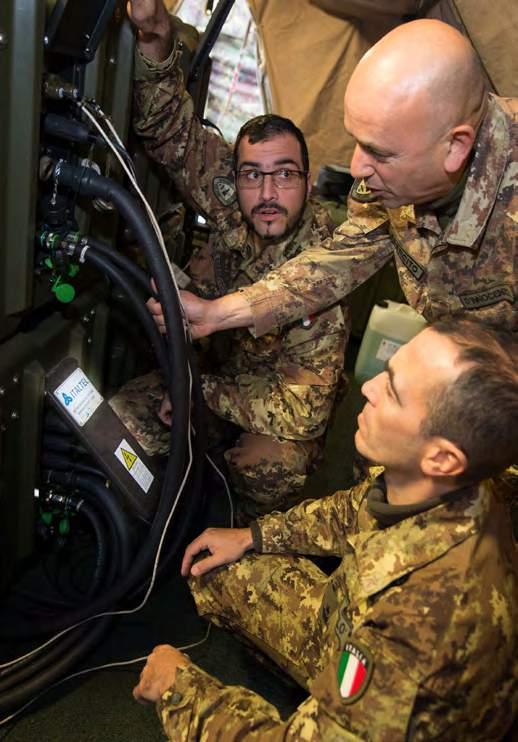
“Deployable Data Centre”. A CIS hardware to ensuere HQ deployability
12 FROM THE STAFF 攀 13
Industries supporting the project
Live, Virtual and Constructive Identity of the Italian Army
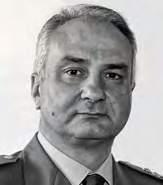
Maj. Gen. ITA (A) Maurizio BONI, Commander of the Army Simulation and Evaluation Centre, former NRDC-ITA Chief of Staff
Foreword
The Italian Armed Forces (IAF) are engaged in stabilisation operations in crisis areas of high strategic importance for the country and in a variety of geopolitical contexts. Here, the IAF are operating under the aegis of international organisations and multinational alliances, carrying out a wide range of differing tasks. In the context of a military and political commitment of utmost importance, these operations represent a cornerstone of the foreign policy and Defense of our country, one of the main actors of international stabilisation. Over recent decades it has emerged that whenever the success or failure of a military operation depends on gaining the support of the local population, positive, lasting results can be achieved solely through intervention on the ground. Additionally, it is equally clear that Land Forces are a key element of national contingents operating abroad. Over the years, Land Forces have displayed unique skills and organisational flexibility, and these allow the Italian Army to operate in the full spectrum of conflicts with units that are able to achieve tangible results in complex operational theatres. The role played by readiness training activities has proved decisive in enabling contingents to acquire these capabilities. Increasing use of simulation-based training is without doubt one of the most successful key elements in achieving the operational objectives of the Italian Army.
Ce.Si.Va.: What is it? - Overview
The Army Validation and Simulation Centre based in Civitavecchia is the main centre for the implementation of simulation-based training for the setting up of command posts and for the preparation of staffs and units for operations abroad. The activity of Ce. Si.Va. consists mainly in the organisation of training activities aimed at ascertaining that units and staffs possess the key operational capabilities needed for the fulfillment of their missions, and this is achieved by means of advanced computer systems for simulation-based training and for command and control. Ce.Si.Va. has also been given responsibility for testing integrated systems for land training, simulations and command and control, as well as systems for digitizing the battlefield in the context of a wider Italian Defense programme called “ NEC Forces”.
Exercises

Ce.Si.Va. is able to utilize all three elements of simulation-based training (LIVE, VIRTUAL and CONSTRUCTIVE) in a synergy that realistically recreates the
scenarios and situations that staffs and units will encounter once they are deployed, and this allows the decision-making cycles of Commands and Units, from the lowest command levels to the highest, to be checked. In recent years, these three elements have made great progress both in terms of technology and their effect on training. A combination of Virtual, Live and Constructive simulation environments (VLC) makes up the so-called “training environment”, used to train both individual soldiers and units at different command levels in a homogenous, distributed and interconnected environment. The training environment consists of a set of systems/simulators, which are devised specifically for the type of training activities to be carried out, and they are interconnected, thus enabling simulation-related data to be shared. Additionally, they use homogeneous simulation scenarios and can be made available to users at different locations throughout the country. The so-called CONSTRUCTIVE simulation, based on the action of fictional entities, is implemented at the Centre in Civitavecchia under the guidance of military
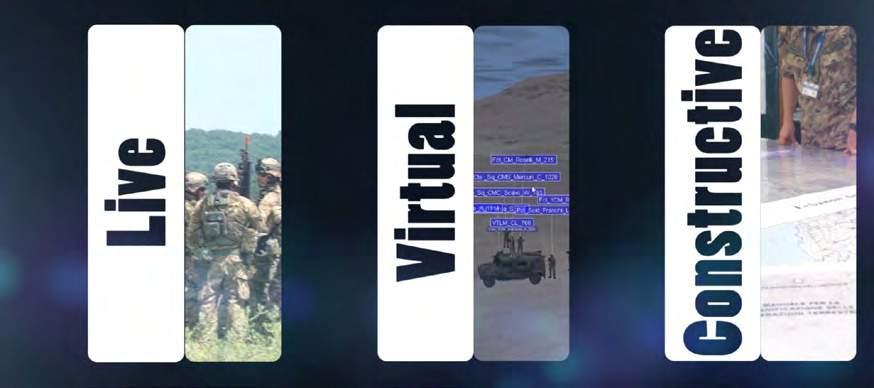
personnel. These Constructive simulation activities are used to train Regiment, Brigade and Division Commanders, with their respective staffs, in the command and control of their units by utilizing a wide range of training scenarios based on the latest operational data available, which is acquired by means of constant interaction with theatres of operations and analogous NATO and Allied Training Centres, as well as by an analysis of the lessons learned from previous missions abroad. CONSTRUCTIVE Training involves a preparation phase, during which the expected operating scenario and the training objectives are studied. The functional
areas to be evaluated are equally defined, and the situations to be submitted to the staffs are set out in detail. Participants are then taught how to operate the computers and programs to be used. Additionally, experts with specific experience from previous missions, can provide in-depth analysis of aspects of the operation and provide examples of possible decision-making solutions. The practical phase is dedicated to the simulation of operational situations and to the simulation of realistic events. These include critical situations and situations requiring “decision-making under stress”, that Commanders and their staffs then have to manage.
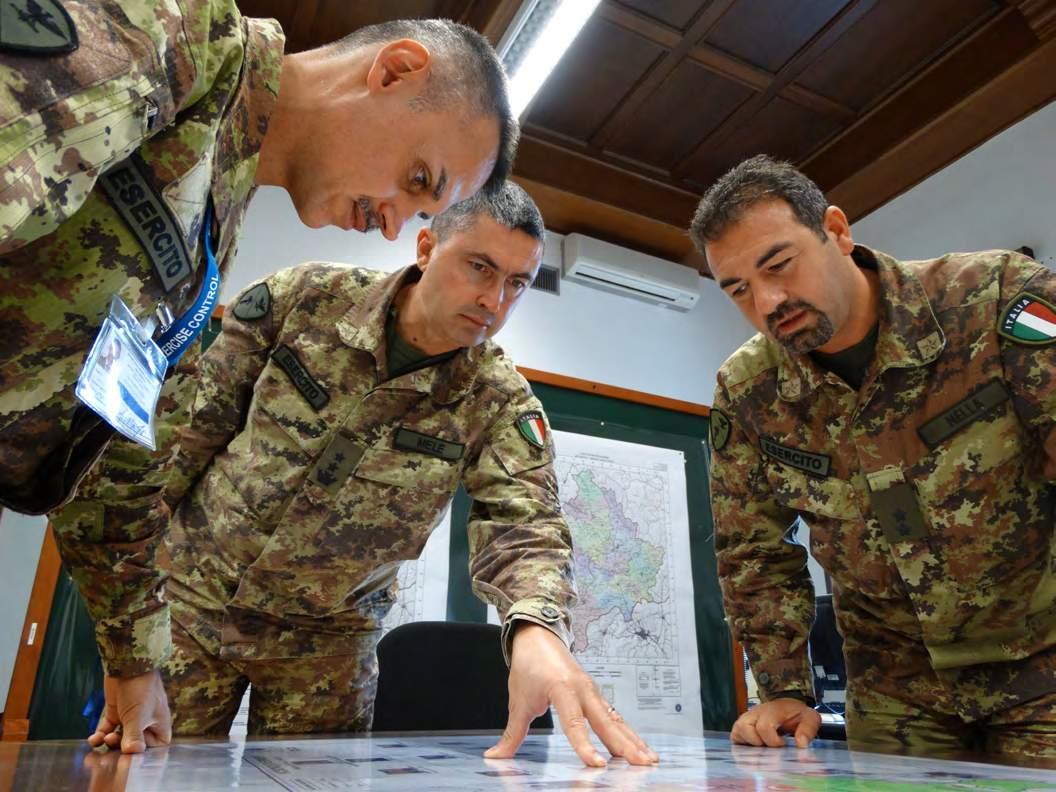
14 FROM THE STAFF 攀 15
Ce.Si.Va. Staff during the planning phase of a constructive exercise
Photo credit: Ce.Si.Va
FROM THE STAFF
Participants’ performance is evaluated by assessment teams and then presented and discussed in specific sessions at the end of the exercise. These sessions are one of the most important and rewarding aspects of the entire training activity. The main simulation system used in the CONSTRUCTIVE environment is the Joint Conflict and Tactical Simulation (JCATS) system, which is able to handle more than 100,000 entities. The JCATS system manages 150 workstations in a variety of simulated and dynamic environments. Additionally, the system is able to put into action more than a dozen political parties, including hostile, neutral and allied parties. The LIVE training phase allows military units to operate in real environments, using the personal weapons, vehicles and weapons systems that have been issued to them. LIVE training is carried out at five Tactical Training Centres: Cape Teulada (in Sardinia); Lecce (in Puglia); Monte Romano and Cesano (both in Lazio); and Brunico (in South Tyrol). There, exercises with opposing parties are conducted. Typically, these exercises involve the use of highly specialised units that are trained to play the role of opposition forces. In addition to simulating conventional forms of offense, those units are able to play the role of other types of threats known worldwide, namely, terrorism, organised crime and irregular forces which, once combined with regular forces, can become a “hybrid” threat.
The simulation system is able to re-create kinetic effects and fire without using real ammunition. In fact, both soldiers and vehicles are equipped with “duel simulators”, along with various sensors which are able to determine the effects of actions taken by opposing
units. In practice, the Live training activity enables units to conduct maneuvers and to perform difficult tactical situations that cannot be simulated with live ammo because of the limitations posed by training areas, security measures, and by the lack of opposing parties.
LIVE training activities are also preceded by a preparatory phase that involves the study of both the scenario and training objectives. During this preparatory phase, detection sensors and mobile devices for controlling and evaluating the exercise are arrayed on the field and the various components of the exercise are checked to make sure they are working properly. There also activities designed to enable personnel to become acquainted with the simulation programs and procedures for tactical use. The active phase of the exercise consists in developing non-stop 36/48 hours actions on the ground. These actions are followed constantly by Observer, Controller and Analyst Teams, who are able to monitor and assess the decision-making process of Commanders at all levels, along with the behavior of the units on the ground. The exercise ends with an analysis and discussion of the performance, which is facilitated by the fact that simulation systems can select, retrieve and graphically show events and combat activities. Additionally, they are able to show multiple parties, factions or units, operating in different combinations or simultaneously and supply a wide range of evaluation data and parametres recorded during the conduct of the exercise. All output data relating to the exercise is then delivered to the unit which has been trained, and once they have returned to their barracks/HQ, they can re-analyse their actions and improve their training in order to correct the deficiencies that were identified. The VIRTUAL simulation phase provides training for
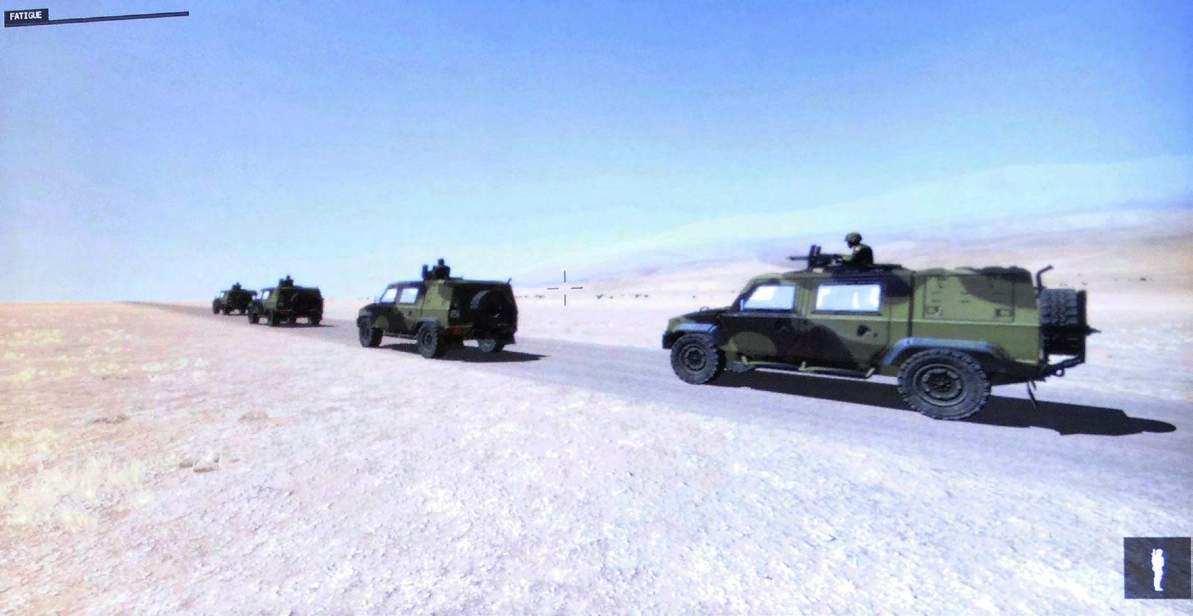
both individual soldiers and teams, immersing them in a virtual reality which faithfully reproduces their operating environment. Ce.Si.Va. uses virtual simulation in LIVE and CONSTRUCTIVE exercises to make the effects of the decision-making process stand out more clearly. The main simulation system used for VIRTUAL training activities by the Italian Army is The Virtual Battlespace 3 (VBS 3). With this system, activities aimed at tactical training in virtual scenarios that can be adjusted to the different training objectives can be carried out, allowing for highly engaging virtual exercises to be created on land, sea and air environments. The VBS 3 virtual environment has a large library of material that can be used to create models to populate the scenarios, and it can re-create geographical areas suited to the training needs. The training of individual soldiers and teams can be personalized by using avatars, and these can be programmed using realistic fatigue algorithms. Scenarios can also be modified in real time, so as to keep up with the continuously evolving action. The VBS 3 system is currently widely used by the Army, both because of the features mentioned previously and because it uses hardware that is readily-available on the market.
Development and testing
One of the driving forces behind the modernisation of the Italian Army is the development of a programme named “ NEC Forces” (Network Enabled Capability). The purpose of NEC is to create “netcentric forces” that are structured in a traditional way but are able to operate in the high-risk environment known as the NCW - Network Centric Warfare - environment. Net-centric capabilities , which use the latest advances in the sectors of command and control, communications and Information Technology, allow the capabilities and effectiveness of the forces on the ground to be enhanced by means of real time knowledge of tactical aspects at various levels. NEC allows all information coming from the area of operations to be exploited synergistically so that information is processed in real time, thus allowing Commanders to make decisions more rapidly and to achieve results consistent with their objectives. All those involved in the maneuver area are connected on a network and take part in decisions and in the orders issued at all levels of command. By means of protocols and methods for exchanging data, the project will allow any computer-based platform to operate as a hub on the command and control network, and to exchange information in a secure and reliable way. In this context, Ce.Si.Va. has the job of testing the integration of the Army’s computer-based platforms, analysing, verifying and validating the operational capa-
bility of the “Forza NEC” project systems by means of operational integration sessions that are throughout the year. In practice, this involves seeing how single systems that have been tested initially in the lab behave in an operational environment on the ground when inserted into a net-centric environment involving increasing complexity in terms of the kinds and number of assets involved. The first objective of these activities is to receive feedback from the “end users” of the systems, unit Commanders from the lowest to the highest levels of Command, which is used either to validate the systems or to have the system specs revised, before the prototypes are put into production. The second objective is to acquire useful information that will be useful in deciding the correct way to distribute these new capabilities which will have a transforming effect on established procedures and organizational aspects.
In conclusion
The use of cutting-edge technology.
The constant reference to current and future operational scenarios.
The study of lessons learned from the experience of contingents already engaged in missions abroad.
The synergistic use of all components of simulation-based training activities.
The specific training of personnel in planning and conducting simulation exercises and in development and testing.
Make Ce.Si.Va. one of the most versatile and effective assets of the Italian Army for the preparation of its units and staffs.
THE ITALIAN ARMY: We are always there for you!
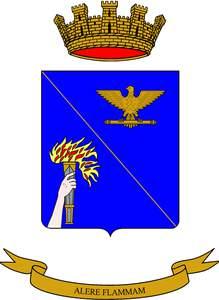

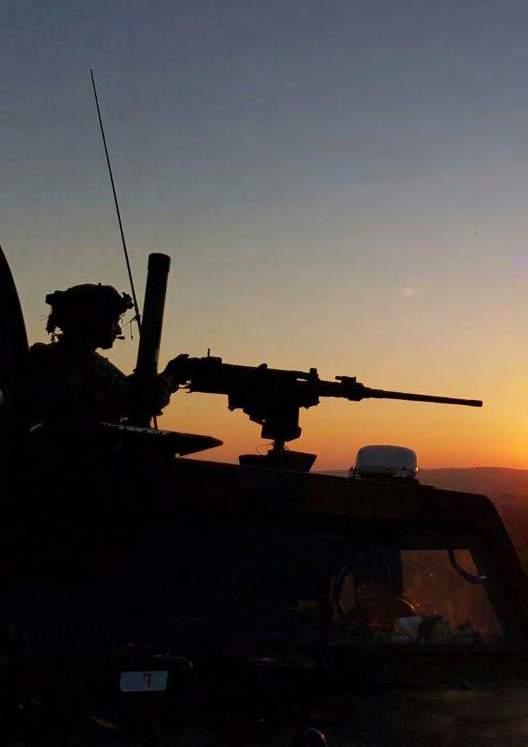
17
A screenshot from the virtual simulation training system
The Italian Army Simulation and Validation Centre emblem
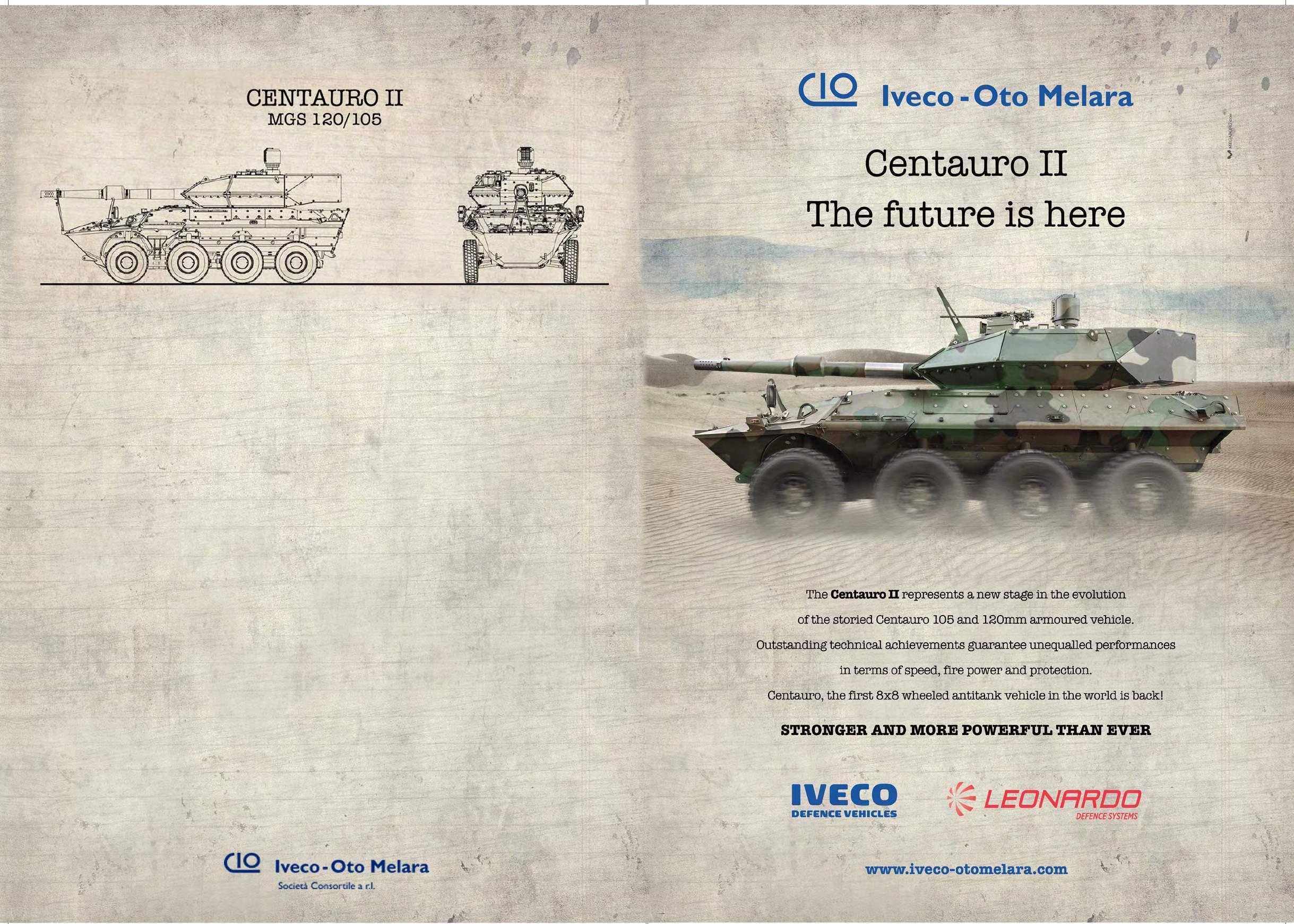
The CENTAURO II represents the logical evolution of the Centauro which has been the first 8x8 wheeled antitank vehicle in the world. Being armed with a third generation 120/45 mm gun, with integrated muzzle brake and semi-automatic loading system, the weapon system of the Centauro II provides a fire power equivalent to that of most modern main battle tanks and it is capable of firing all latest generation 120 mm, NATO APFSDS and multi-role MP munitions. In order to ensure unequalled mobility, a new-generation engine, upgraded transmission, braking system and control electronics have been adopted. While maintaining the H-drive architecture, the Centauro family hallmark, the chassis was rearranged to further improve protection against mines and IEDs; state-of-the-art add-on ballistic packages fitted to the hull ensure high level protection against kinetic energy and hollow charge projectiles. The turret also follows the add-on armour kit concept. Ammunition stored in the hull and in the turret are hosted in compartments that are separated from the crew section by explosion-proof doors, pre-carved panels and dedicated anti-explosion systems ensuring further crew safety. The Centauro II turret is fitted with latest generation optronics for the commander and gunner and with a suite of communications and command and control systems ensuring maximum situational awareness. The turret can be fitted with a Hitrole Light RCWS that increases flexibility in other-than-war scenarios while ensuring maximum crew protection.
Technological Innovation and National Security
Innovation is the key factor to compete in this globalized world. Only a country system that can express and protect its industrial structure through the use of patents and brands can hope to survive and maintain that social wellbeing which becomes fundamental for national security and the future of the new generations
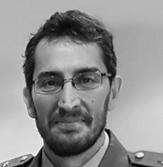
A1st Lt ITA (A) (Res) Massimo FRANCHI Strategic Advisor, Journalist and Subject Matter. Expert Member of the Italian Delegation at the Interallied Confederation of Reserve Officers and at Gaminger Initiative
fundamental theme for the survival of Italy’s industrial system is technological innovation.
By now, the Western world is saturated by products, with domestic markets that are stagnant or in great difficulty. In order to survive, businesses are forced to steer their strategy towards international markets and developing countries with sizeable populations that need products; this means millions of people who have achieved a certain earning capacity and spending power. The Italian System, despite heavy restructuring and reorganization after the crisis of the last few years, mainly consists of SME1s which often find themselves in difficulty in global competition due to the critical dimension required, along with a lack of financial resources, human resources that do not measure up when it comes to international markets, and low investments in R&D. As we know, innovation and research go hand in glove and certain sectors that have been the the feather in the cap of Italy’s industrial system for years, the famous 4 Fs (Fashion, Furniture, Food & Ferrari), are now in the hands of multinationals or foreign financial conglomerates that have often moved the enterprise’s funds and even their headquarters to their own country (the French ownership of many Italian fashion brands is a case in point). Innovation is something different from invention, which in general precedes it. Indeed, innovation requires that the novelty being proposed is efficiently marketed or used for the production of goods or services2. In this regard, it becomes fundamental to bear in mind that only marketing an invention turns it into a real innovation.
The Austrian economist Joseph Alois Schumpeter3 in his The Theory of Economic Development highlighted
Prev. Pub. in “Rivista Marittima”, monthly magazine of the Italian Navy, 9 (Oct. 2016)
the innovator entrepreneur as the driving force behind economic growth able to bring about radical changes through renewals of products or processes, the use of new raw materials, the opening up of markets and organizational changes. He used the expression “creative destruction” to indicate the evolutive process of the capitalist economy. Even today we can still agree that it is only technological and management innovations that transform the production cycle, by altering the momentary balance created in the markets and eliminating those businesses that are incapable of innovating.
Depending on which sectors are taken into consideration, and how mature they are, we can see innovations in processes, products, processes and products and those linked to scientific discoveries4. Nowadays, it has become fundamental for businesses to invest in R&D – the percentage of investments will vary based on the division – either independently or through agreements with universities and research centres, on the basis of clear patenting strategies that make it possible to find the funds to launch new projects.
Industrial Patents, Brands and Secrets
One element that allows us to determine the degree of competitiveness of a country’s system with some certainty is the number of patented inventions protecting innovations in each sector. A patent5 protects and brings value to a technical innovation, i.e. a product or process that provides a new and innovative solution in response to a technical problem: this may be to do with industrial inventions, utility models or new varieties of
1 In 2015, the SBA Fact Sheet Italy listed 3,692,597 businesses of which 99.9% were SMEs, out of which 3,503,624 were micro-enterprises.
2 Joseph Alois Schumpeter, Theorie der wirthschaftlichen Entwicklung, 1911.

3 Joseph Alois Schumpeter (T ešt’, Moravia, 1883 - Taconic, Connecticut, 1950). A lecturer in Graz and Bonn (1925-32), he was Finance Minister of the Austrian Republic (1919); emigrated to the USA, and from 1932 taught at Harvard University. Source: Enciclopedia Treccani. K. Pavitt, Sectoral patterns of technical change, toward a taxonomy and a theory, “Research and Policy”, 1984, 13 http://www.uibm.gov.it
plants. As is well known, owners of a patent acquire the right to forbid third parties from producing, selling or using the content of their invention. Differing from the patent is the secret, which, as the word itself says, must be kept from third parties. Instead, the brand6 is a “sign” used to distinguish certain products and/or services from those of the competition; the brand plays a central role in marketing and promotion strategies, contributing to the establishment of a company’s image and reputation worldwide. In our business system, consisting mainly of micro and small enterprises, the real difficulty is to explain the costs of “lack of protection”, which lead to price depression, loss of market share, absence of deterrent power, loss of earnings from licenses, and so forth. We must then consider that in Europe, 69% of the patent applications are generated by big business, while only 26% come from SMEs. In this regard, it is fascinating to understand which countries make the most patent applications at an international level7. In 2015, the first five places in the EPO clas-
6 http://www.uibm.gov.it
7 EPO 2006-2015 per residence of holder.
sification were filled respectively by the USA (42,692), Germany (24,820), Japan (21,426), France (10,781) and the Netherlands (7,100). Italy, with Europe’s second most important manufacturing industry after Germany, was placed tenth with 3,979 applications (+9% compared to 2014)8. This fact becomes even more depressing if we take a look at the classification of EPO patent applications per million inhabitants, where Italy lies in eighteenth position, while Switzerland has firmly taken the reins9. The classification of Italian companies in 2015 was led by Indesit with 107 applications, followed by Fiat with 84 applications, STMicroelectronics with 58 applications, Finmeccanica and Pirelli who tied at 39 applications, and Chiesi Farmaceutici with 35.
The Italian Defence Sector and Dual Use
The Defence Manufacturing Sector – whose strong points are shipbuilding, aerospace engineering and special ground vehicle development – are strategic in Italy because of the number of employees, the R&D, and
8 The most innovative Italian region is Lombardy with 33% of the applications, followed by Emilia Romagna (15%) and the Veneto (13%). The fastest growing sectors are those of computing (+76%), digital communication (+59%), pharmaceuticals (+54%) and monitoring sy stems (+47%).
9 Many multinationals have their European headquarters in Switzerland for tax and security reasons
 Simplicio © - ILS Integrated authoring software. This tool is used by companies such as Fincantieri, Leonardo, Northrop Grumman and by NATO. Developped by Isselnord (SP), an AIAD member company
Simplicio © - ILS Integrated authoring software. This tool is used by companies such as Fincantieri, Leonardo, Northrop Grumman and by NATO. Developped by Isselnord (SP), an AIAD member company
20 FROM THE STAFF 攀
21
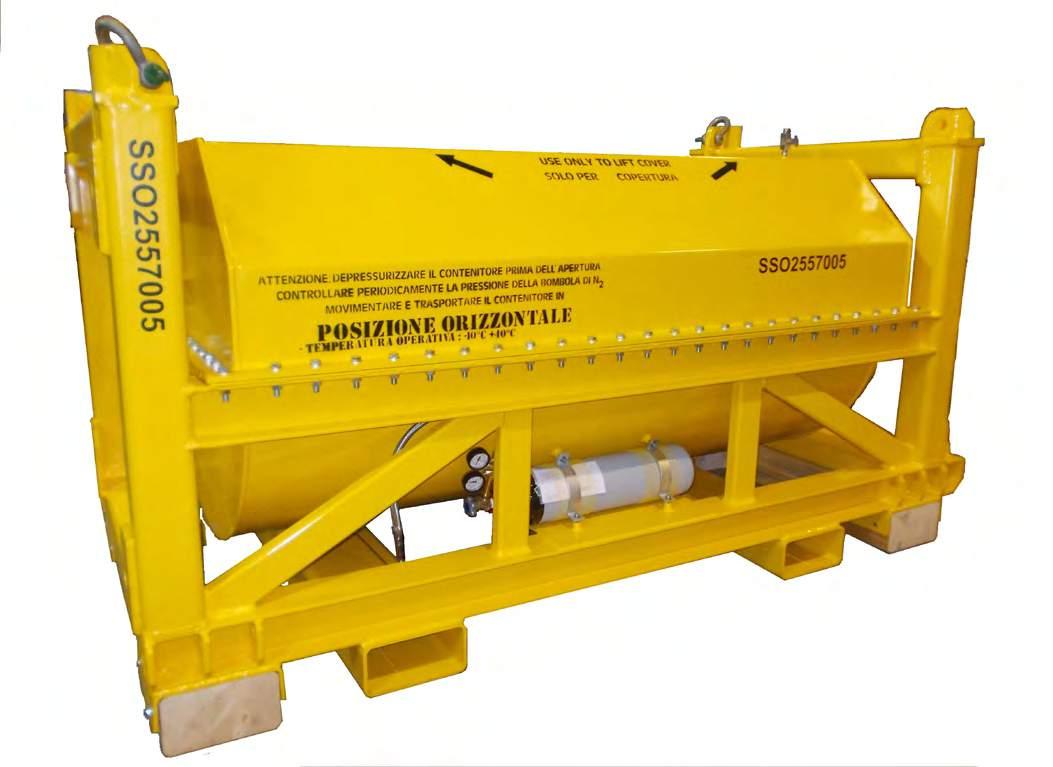
Norske Veritas (an international certification body and classification society) in accordance to DNV 2.7-3 “Portable Offshore Units”
the multiplier effects generated. From a purely economic perspective, we must consider that the shipbuilding sector alone has an employment multiplier effect of 1 to 6, and an income multiplier effect of 3.43. These figures are possible thanks to the fact that shipbuilding is a sector that is still 90% “Made in Italy”10. Indeed, on its own, the new fleet for the Navy – an investment of just over 10 billion Euro, with 5.4 billion Euro already approved – will generate estimated national wealth of 41 billion Euro, uniformly spread throughout the country, with 22 billion in the North and 19 in the Centre-South11. As well as the production aspect, we must consider the involvement, for over 20 years, of firms dedicated to the servicing and maintenance of ships. Given that the military shipbuilding sector is high-tech and founded on collaboration with research centres and the university world, the impetus that the Defence sector can give Italy’s industrial system in terms of innovation is crystal clear.
Nowadays, the countries with the largest number of patents are in Asia, and in 2012, 55.9% of the world’s patent applications came from there. From this continent arrive huge investments in the Defence sector and for the modernization and expansion of navel fleets. The projects of the Indian, Chinese and Japanese Navies are remarkable and are all progressing steadily. China, in particular, after the 2012 launch of the Liaoning aircraft carrier, is now working on a second aircraft carrier and shows an impressive growth in the number of military patents, especially those to do with “avant-garde technologies”. For a more thorough global overview of the subject of innovation, we should recall the US Navy’s new Zumwalt-class destroyer, which includes a stealth hull, avant-garde electronics and innovative weapon systems (lasers and electromagnetic cannon that require accumulators to store electricity). In Italy, if we take Finmeccanica-Leonardo as an example, the main tech-
10 See: “Prospettive Orientamenti di massima della M.M. per il periodo 2015-2025” – Supplement to the “Rivista Marittima” of November 2014

11 Source: www.economiadelmare.org, an interview with the Chief of Staff of the Italian Navy, Admiral Giuseppe De Giorgi, 29 January 2014. It should be noted that “Prospettive Orientamenti di massima della M.M. per il periodo 2015-2025” – Supplement to the “Rivista Marittima” of November 2014, spoke of around 34 billion, of which around 19 was in the North, and 15 billion in the Centre-South
nological Intellectual Property Rights are for “System Design” (26%) – involving fluid dynamics, aerodynamics, electromagnetism, the architecture and ergonomics of systems – “Optronics and Acoustics” (14%) – using both active and passive technologies – “Materials and Related Production Processes” (12%) - which includes composite materials, ceramics, surface treatments and plastics – plus “Electronics” (11%), “Mechanics” (8%) and “Modelling, Simulation and Computing” (6%)12 One very important aspect to be looked at closely in this sphere is Dual Use technology, which means technologies that can be used for both military and civilian purposes. In our history, technologies born for military uses have frequently found civilian usages, becoming fundamental innovations for human development. Indeed, missile technology, nuclear power and the Internet are all examples of daily civilian use of technologies originally born for military purposes. The new Italian Fleet is a perfect example of a Dual Use multiple-purpose programme for military navies – to be used for national defence, in foreign policies, interventions in natural disasters, and with the flexibility of being able to change mission while at sea. From a regulatory perspective, there are many examples of Dual Use both in Italy and in the rest of Europe. For the sake of complete information, we must remember that within the Ministry of Defence there is the Patents and Intellectual Property Service which deals with the
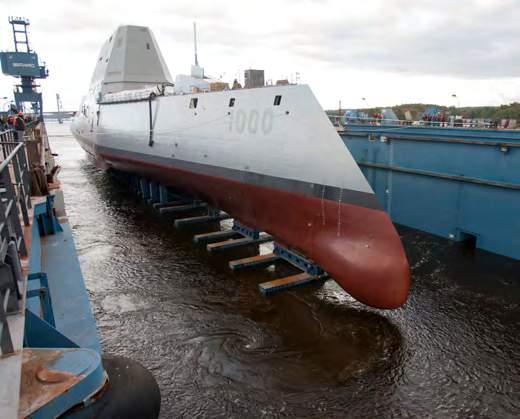
classification of information on inventions of interest for defence, the filing of patent applications for inventions and/or utility models created by staff employed by the Ministry of Defence, consultancy on national policies regarding intellectual property and the protection of technical government and/or industrial information by negotiating agreements for reciprocal protection of intellectual property with foreign countries.
The Role of NATO
The Italian Ministry of Defence set up an office dedicated to industrial property rights as far back as196413, under the auspices of NATO and EURATOM14. In particular, the birth of EURATOM, whose treaty was subsequently included in the Single European Act which came into force on 1 July 1987, obliged member states to equip themselves with a military structure that would be able to protect “information on the field of nuclear energy from studies and programmes carried out within the EURATOM framework”15 and allow dissemination of nuclear power without compromising the defence needs of member states. The consequent use of nuclear energy for civilian purposes led to the filing of 553 patent applications in Italy by its European partners, from 1958 to 197616, all with the same security classification marked by the suffix “EURA”; these were patents of foreign industrial groups filed in Italy for their protection and usage. NATO’s role in protecting patent applications has been decisive since the 1950s with its “NATO Agreement on the Mutual Safeguarding of Secrecy of Inventions relating to Defence and for which applications for patents have been made”17. The crux of the NATO agreement still consists in the fact that the country where the patent application has been filed protects the invention with the same security classification as that applied in the country of origin. The Industrial Property Code indicates that the patent applications filed, either at the Chamber of Commerce or at the Italian Patents and Brands Office, have already been evaluated to identify those of potential interest for Defence18. In addition, industrial property rights awaiting registration or patenting can be expropriated19 by the State in the interest of the country’s military defence or for other reasons of public interest.
12 http://www.leonardocompany.com/innovazione-innovation/proprieta-intellettuale
13 Founded on 16 June 1964 with an inter-ministerial decree, the Patents and Intellectual Property Service of the Ministry of Defence (at the time, the Military Patents section), is the only government office protecting intellectual property.
14 EURATOM was founded with the 1957 Treaties of Rome.
15 Inter-ministerial Decree no.257 of 16 June 1964, op. cit., Art. 2.
16 “50° anniversario del servizio brevetti e proprietà intellettuale del Ministero della Difesa”, by Fabio Zampieri, “Informazioni della Difesa”, (a periodical of the Chiefs of Defence) 3/2014.
17 The agreement was signed in Paris in 1960, and came into force on 12 January 1961
18 The Industrial Property Code (CPI in Italian) issued with Legislative Decree no. 30 of 10 February 2005, amended and supplemented by Legislative Decree no. 131 of 13 August 2010
19 Pursuant to Art. 142 of Legislative Decree 30/2005 supplemented by Legislative Decree. 131/2010, expropriation is envisaged by Presiden tial Decree, on a proposal of the competent Ministry; the Decree establishes the compensation due to the property right holder
 Nitrogen pressurized containers for transport and storage of cylindrical symmetry machines such as turbine rotors, centrifugal compressors, or parts of these. Especially used in the Naval and Oil & Gas sectors. Designed and built by Fratelli Bertoni Costruzioni Generali, La Spezia - Italy, the containers are certified by Det
Nitrogen pressurized containers for transport and storage of cylindrical symmetry machines such as turbine rotors, centrifugal compressors, or parts of these. Especially used in the Naval and Oil & Gas sectors. Designed and built by Fratelli Bertoni Costruzioni Generali, La Spezia - Italy, the containers are certified by Det
22 FROM THE STAFF 23 攀
Photo credit: US NAVY
USS ZUMWALT: The state of the art of guided Missile Destroyers
The Most Innovative Companies
Innovation is linked to continuous change and investments in R&D. However, it has been demonstrated that true innovators have strategies that are linked to particular innovation practices. It therefore becomes important to understand companies’ approach to innovation, their way of managing the innovation process, customer relations and market presence. The innovation strategy is a critical success factor that needs to consider global strategy, company culture, the implementation of strategies and the innovation model. Classical innovation strategies include three models: Need Seekers, Market Readers and Technology Drivers20. Need Seekers develop close relationships with customers who are observed and studied through team work and focus groups, to provide customer data analysis and knowledge of the whole supply chain. With this approach, it is normally the customer who benefits from the innovation being developed. Market Readers research ideas within company know-how that can be turned into products, to be improved over time, using traditional techniques such as market research and trade network information that allow gradual improvements with a rapid delivery of products to the markets. Last but not least, there are Technology Drivers who wish to develop new products thanks to technological progress, exploration and technological scouting, trying to venture beyond what the market might suggest on the basis that the consumer does not always know what can be done.
Conclusions
Around the world there are businesses that are constantly booming and companies that have instead lost market share despite being champions of innovation for a long time. If we have a look at the ten most innovative businesses in the world, we find Apple, Google, Tesla, Samsung, Amazon, 3M, General Electric, Microsoft, IBM and Toyota. These companies invest a great deal in R&D, but in many cases are not top of the list when it comes to investments in R&D. As we have seen, Italy, which has a business fabric consisting of SMEs, finds itself in difficulty, even if smaller companies are twice as efficient in the phase of converting ideas compared to large organizations, thanks to their leaner structure. Almost all businesses, particularly small-scale ones, depend on domestic networks to evaluate their ideas, and the contribution that their top customers give. Analyses, processes and procedures are fundamental, however equally decisive

is the role of human resources within organizations, how they are managed in terms of group performan ce, and their capacity to freely interpret ongoing chan ges, in a meritocratic climate in which projects are also steered by multiple development programmes as part of research created by the European Union. In the naval sector we must mention Fincantieri their prospectus for the public offering for sale and sub scription to obtain the company’s shares on the online stock market, listed 52 patent applications relating to 37 industrial inventions; of these applications, 22 had been granted for 16 inventions in different countries and/or areas around the world. Clearly, for the most part, the inventions patented by the Group concern shipbuilding technologies. The Italian Defence Manufacturing Sec tor, represented by the AIAD Federation almost all of the nation’s hi-tech businesses and directly employs 159 thousand employees while supporting the supply chain, with a production value of almost 14 bil lion Euro23, in a sector characterized by a high density of capital, above all of the intangible type such as rese arch and patents, which is 5 points greater than traditio nal manufacturing. Furthermore, every Euro of added value in AD&S sector businesses generates a further 1.6 Euro for the economy, while each of its employees sup ports 2.6 jobs in Italy. AD&S businesses place in Italy when it comes to investments in innova tion and R&D, with a slice of over 12% out of the total of Italian businesses, to the tune of around 1.5 billion Euro per annum. The research fields most followed by this sector concentrate on technological domains in volving 3D printing, the internet of things, smart cities and security. Over the last ten years, the average num ber of patents registered per single company in this di vision was 8.5 compared to the Italian average of 1.5. Technological innovation and its implications are clo sely linked to Italy’s national security. Ongoing global competition, with necessary economies of scale to maintain leadership in the various sectors, has left Italy’s industrial fabric in crisis, given that it mainly consists of micro and small enterprises. Only a relaunch based on technological innovation and proposals with origi nal value, which allow a lasting, defendable competitive advantage, can be the basis of a real recovery that can maintain economic wellbeing and social peace. The dri ving force for this fundamental objective needs to come from a strategy that genuinely places intellectual capi tal at the centre and protects it from external events.


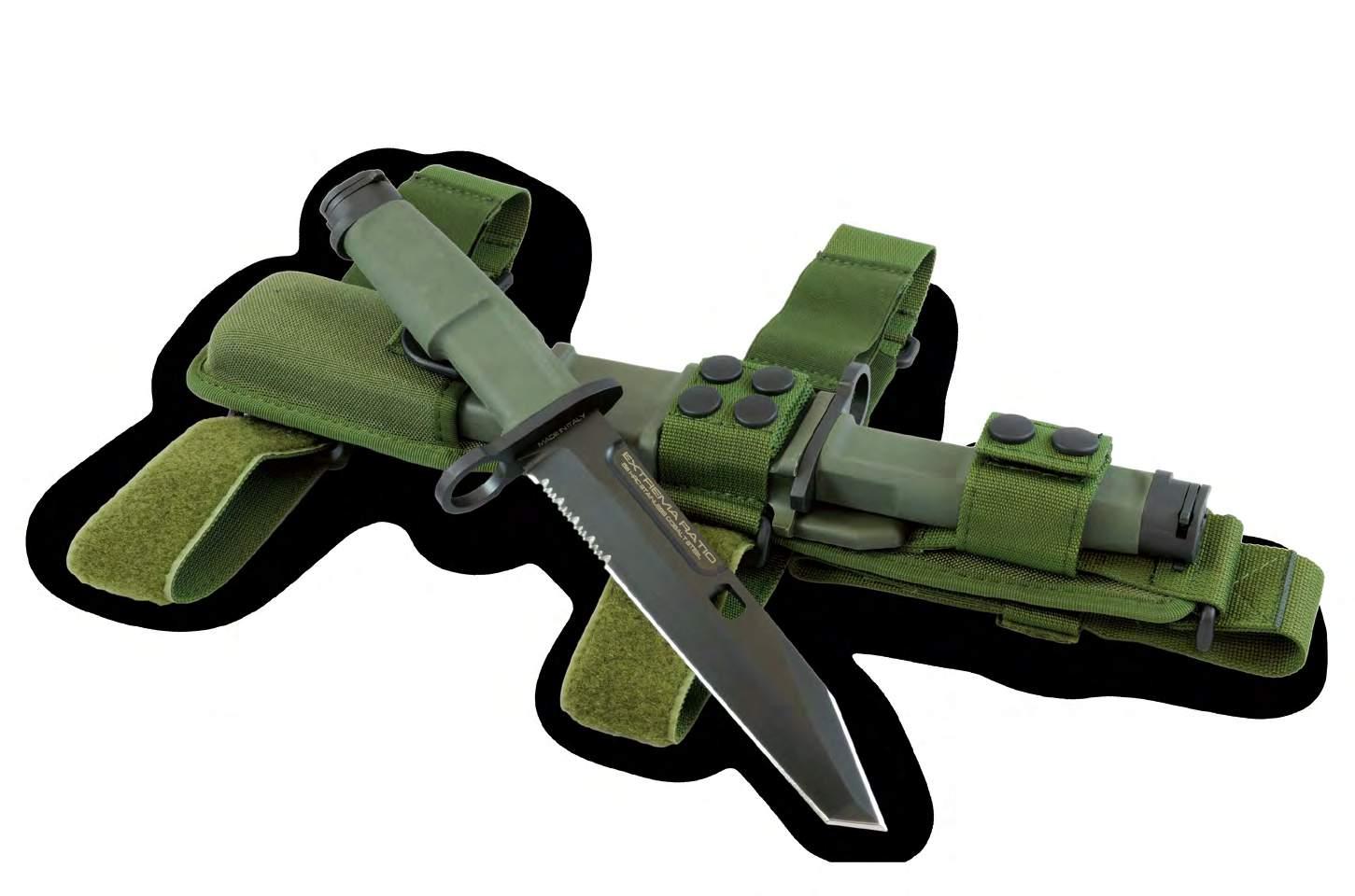
20 Booz & Company, The 2012 Annual Innovation 1000, pag. 20 21 Prospectus filed with CONSOB on 13 June 2014 and followed by notice of its approval issued on 12 June 2014, file n° 0049678/14 22 The AIAD is the federation of Italian Aerospace, Defence and Security companies and is a member of Confindustria Prometeia for AIAD, (The industrial system to defend the country system), 2015 Results Acronym of “Aerospace, Defence & Security” 24 FROM THE STAFF 攀 Via Traversa delle Ripalte, 72 - 59100 Prato (PO) Italy Tel. +39 0574 584639 FULCRUM BAYONET THE NEW STANDARD
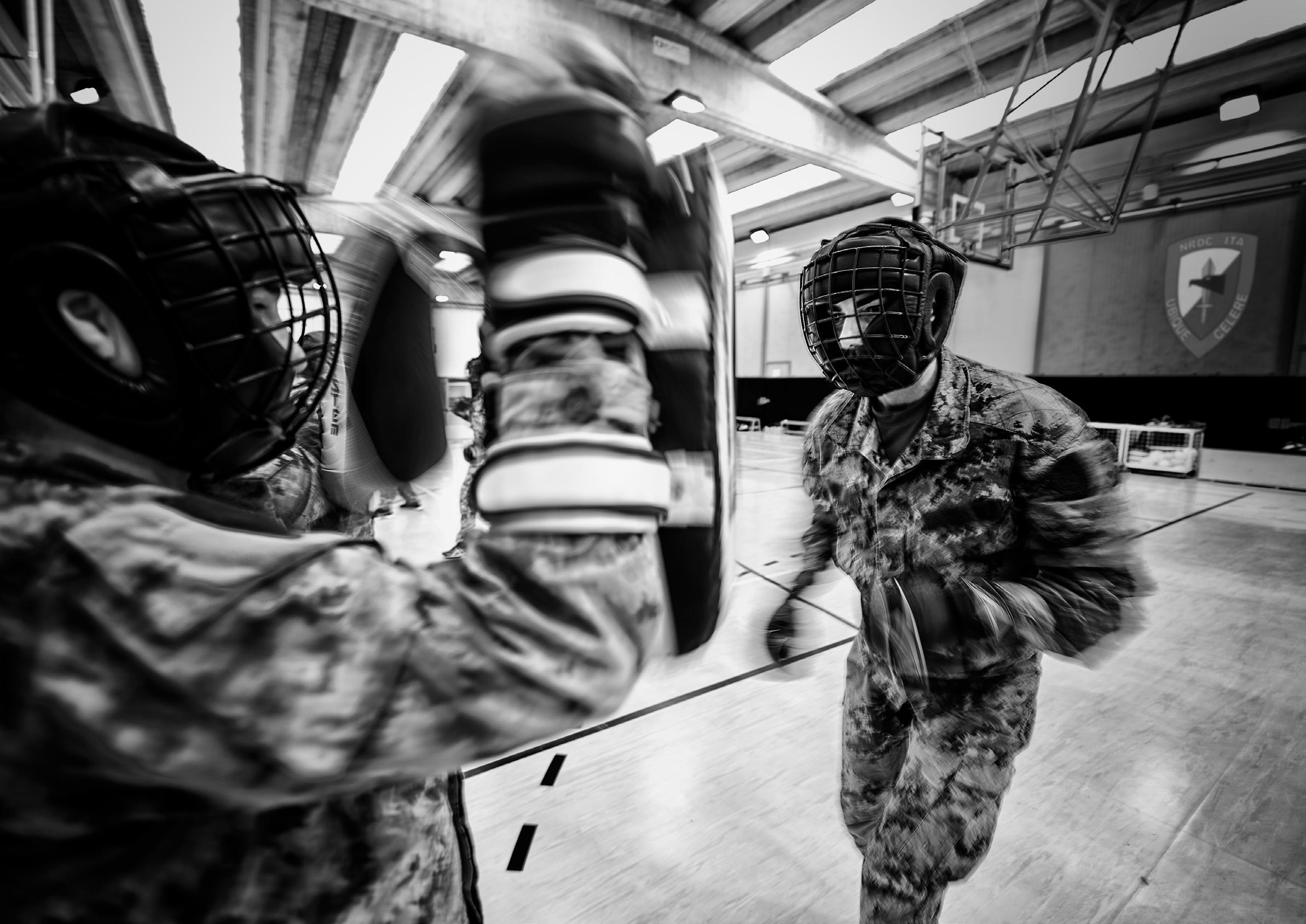 Solbiate Olona, “Ugo Mara” Barracks gymnasium. A Combat Military Method session at NRDC-ITA: one of the professional skills the Italian contingent is keen on.
Solbiate Olona, “Ugo Mara” Barracks gymnasium. A Combat Military Method session at NRDC-ITA: one of the professional skills the Italian contingent is keen on.
Exercise Eagle Triglav
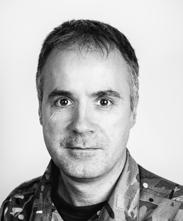
WO2 GBR (A) Mal THOMAS, assigned to NRDC-ITA in July 2015. Employed as the J8 fiscal warrant officer and is a UK military mountain leader
Exercise EAGLE TRIGLAV was an NRDC Italy
UK Contingent mountaineering expedition to the Julian Alps in Slovenia conducted over 4 days in September 2016. The main aim was to summit the highest mountain in Slovenia, Mount Triglav, 2864 metres above sea level. The expedition was designed to train personnel in challenging adventurous activities involving controlled exposure to risk, developing leadership, teamwork and physical fitness, among other personal attributes and skills vital to operational capability. Day 1 began with a leisurely start leaving Ugo Mara Barracks at 0700 hours, eventually arriving at the car park of Dom Savica near Lake Bohinj at 1530 hours. Following the footpath out of the car park, we initially followed a very steep path through forests of spruce and beech using fixed cables and staples. We ascended 1066 metres in 6.5 kilometres with amazing vistas looking over to Vogel mountain on the opposite side of the valley. We arrived at the Koca pri Triglavskih Jezerih refuge (1685 metres) just in time for evening meal and some well-earned food and rest.
Following a relatively good night’s sleep (at least the snorers in the group had a decent sleep which became the theme of the expedition), we once again set off through the beech forest on undulating terrain heading for our first objective - Veliko Špicje. After a steep climb on some fixed protection and some exposed scrambling, we reached the summit at 2398m with some amazing views over the Julian Alps. From there, we descended to the Zasavska koca na Prehodavcih refuge at the end of an area of very impressive limestone pavement which resembled a rock glacier. Following the obligatory coffee at the hut, we started a steep ascent up to a saddle and then an equally steep descent on scree down to a ‘footpath’ that would take us around the north face of Kanjavec on some very loose scree with some very big drops. Some areas had fixed protection and cables, many didn’t - a fall here is not advised! One area of


the path was painted with the words ‘PAZI’ – not quite sure what this meant but it didn’t sound good! Having finished this section of the trek, nicknamed ‘Footpath Certain Death’, 10 tired bodies ascended the final rise leading to our home for the evening - Koca na Dolicu refuge at 2151 metres.
Day 3, summit day, began with a relatively leisurely stroll up a zip-zag path leading to a plateau that would eventually lead up us the screes to the start of the climb to Triglav. Once at the scree, we donned Via Ferrata kit and started the climb on the exposed west face, onto the summit ridge and then to the main summit along with the remainder of the hut and half the population of Slovenia! After the obligatory summit photos with the summit monument of Aljacev stolp, we descended steeply to Mali Triglav on a fairly exposed ridge, meeting some very interesting characters en route, eventually arriving at Vodnikov Dom na Velem Polju for the night. From here we descended to Stara Fucina via the spectacular Mostnica Gorge and then onto Lake Bled for a spot of R&R and burek.
Ex EAGLE TRIGLAV was a successful, well-planned and executed expedition that achieved all the aims of

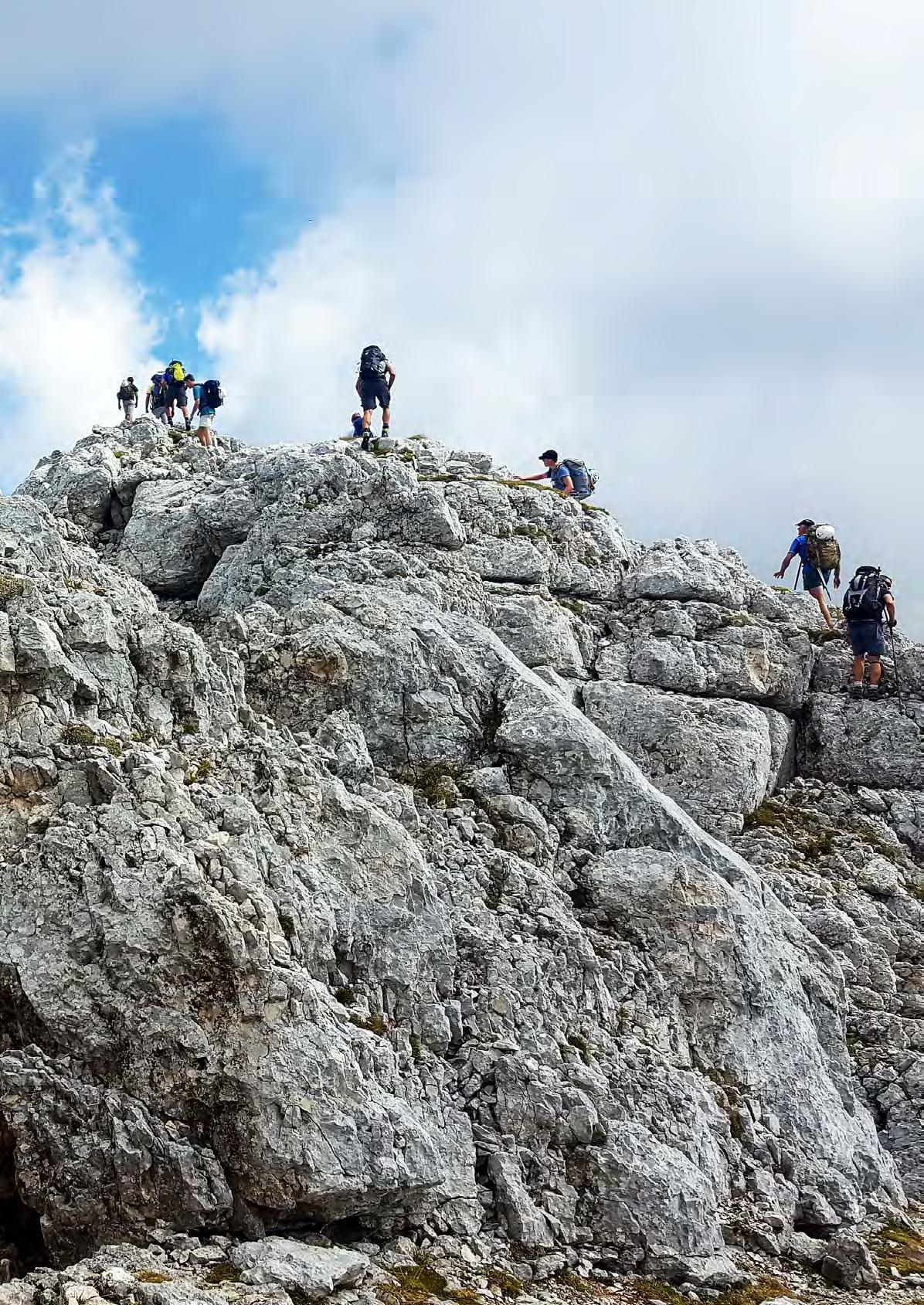
adventurous training; it enhanced team cohesion whilst pushing all participants physically and mentally outside of their comfort zone with a controlled exposure to risk. This was all with the added benefit of being conducted against the beautiful and spectacular backdrop of the Julian Alps. ‘Triglav is not just a mountain, Triglav is a kingdom’ wrote Julius Kugy, famous explorer of the Julian Alps. Triglav certainly lived up to all our expectations and more.
28 SPORT
BOARD 攀
Photo credit: NRDC-ITA Staff
Photo credit: NRDC-ITA Staff
SPORT BOARD
NRDC-ITA Mountain Military Training on Dolomites
 FLt. Col. NLD (A) Jürgen MUNTENAAR, SO1 Med Plans & Coord
FLt. Col. NLD (A) Jürgen MUNTENAAR, SO1 Med Plans & Coord
rom 30 August to 1 September 2016 the German and Netherlands contingents conducted a demanding mountain military training event in the Dolomiti region at Tai di Cadore/Belluno together with members of 7th Alpini Regiment. The aim of this year’s training event was further military and historical education (WW I), combined with mutual German-Netherlands understanding under physically demanding conditions.
The driving force for the German-Netherlands cooperation at the NRDC-ITA is the close cooperation and further integration of Armed forces units of both nations. Currently the 11th NLD AASLT Brigade is integrated and under OPCOM of the German Division “Schnelle Einsatzkräfte” (Fast Response Division). 43 NLD Mechanised Brigade is now integrating in the 1st German Panzer Division. This Dutch Mechanised Brigade has in its organisation the German 411 Tank battalion which has an integrated Dutch tank coy. Within the Naval forces of both nations the shared use of the NLD Joint Support Ship (JSS) and the integration of the German Sea Battalion (amphibious) within the NLD Marine Corps Brigade is another example of deeper integration, smart defence and use of resources. This deeper integration of forces made possible by a similar cultural identity and understanding is one of the main reasons to cooperate and work together within the NRDC-ITA.
The program was initiated by LTC Peter Wojatzki (J4) and made possible through the highly appreciated assistance of our Command Sergeant Major Bortolino Gema. Being an Alpini himself CSM Gema had the knowledge and network to provide the essential information where to go and whom to contact within the ITA-Army to provide the necessary support for the program. Next to that CSM Gema took it upon himself to accompany us with two of his junior NCOs during the tour in the Dolomites. After preparatory work on Monday 29 August the whole

team met on Tuesday 30 August at 06.00hrs at “Ugo Mara” Barracks for an early departure to the HQ of 7th Alpine Regiment in Belluno. After arrival the team was greeted by senior Alpine instructor WOI Pietro Galeazzi who executed the inprocessing at 7th Regiment. During inprocessing the team received the necessary brand new and state of the art alpine equipment followed by a lunch in the regiment’s mess facilities together with the Regimental Commander. During the afternoon the program provided safety instructions and training in the use and handling of the alpine equipment, which was done partially on the barracks side and partially at the Regiments instruction area in the mountains outside Belluno. During the training on the mountain instruction area the team members climbed their first “via ferrata / Klettersteig”. To close the day WOI Galeazzi took the team to the
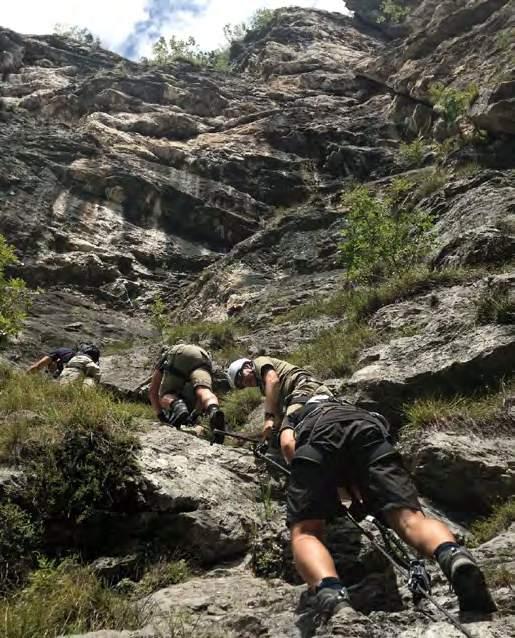

town of Longarone to visit the site were on the 9th of October 1963 the Vajont dam disaster happened and killed almost 2000 people.
On the morning of Wednesday 31 August the whole team moved to the Lagazuoi area close to Cortina d’Ampezzo. On the Parking place in the valley we met the Commander of the Italian Alpine Command Major General Bonato with two of his officers who were also going up the same route. The program for the day consisted of a 30 minute walk to the remains of an Italian Army Hospital from WWI which is the start of the via ferrata / klettersteig “Col dei Bos”. The Col dei Bos is a medium level 2.5 hour climb covering some 400 meters altitude on the mountain slopes followed by a 30 minute walk to the peak to the Col dei Bos (2500m ASL). After celebrating the safe arrival at the peak the team moved by a 1 hour walk up to the Rifugio Lagazuoi (2750m ASL) for lunch. The route down to the parking place from the Lagazuoi rifugio would be via the tunnel system dug by Italian soldiers during WWI. During the walking part of the tour WOI Galeazzi took the opportunity to point out different aspects of the surrounding terrain and the front lines between Italian and Austrian Troops that fought there during the WWI. There are still a lot of remains like trenches and fighting positions from both sides to be seen. The tour and explanations provided an insight into the difficulties of mountain warfare in an age when men had to carry everything up the mountain. Next to that the beauty of the Dolomites is awesome and it is
clearly understood why many Hollywood movies that need breathtaking mountain scenery use this region.
On the final day, Thursday 1 September, a mountain bike tour was scheduled. After picking up the mountain bikes the whole team rode a 36km route from Cortina d’Ampezzo to Calalzo di Cadore. During this easy route there was time to enjoy the beautiful scenery and to relax the muscles from the strain of the day before. After finishing the bike tour the whole team returned to Caserma P.F. CALVI for shower, lunch and the return to NRDC-ITA. The German-Netherlands team wish to thank the Commander and personnel from 7th Regiment Alpini at Belluno and Tai di Cadore for their excellent and very professional support.

30
攀
31
NRDC-ITA personnel on a “Dolomites”climbing route
NRDC-ITA Team on top of “COL DEI BOS”
A panoramic view of the “Dolomites”
Photo credit: NRDC-ITA Staff
Photo credit: NRDC-ITA Staff
Photo credit: NRDC-ITA Staff

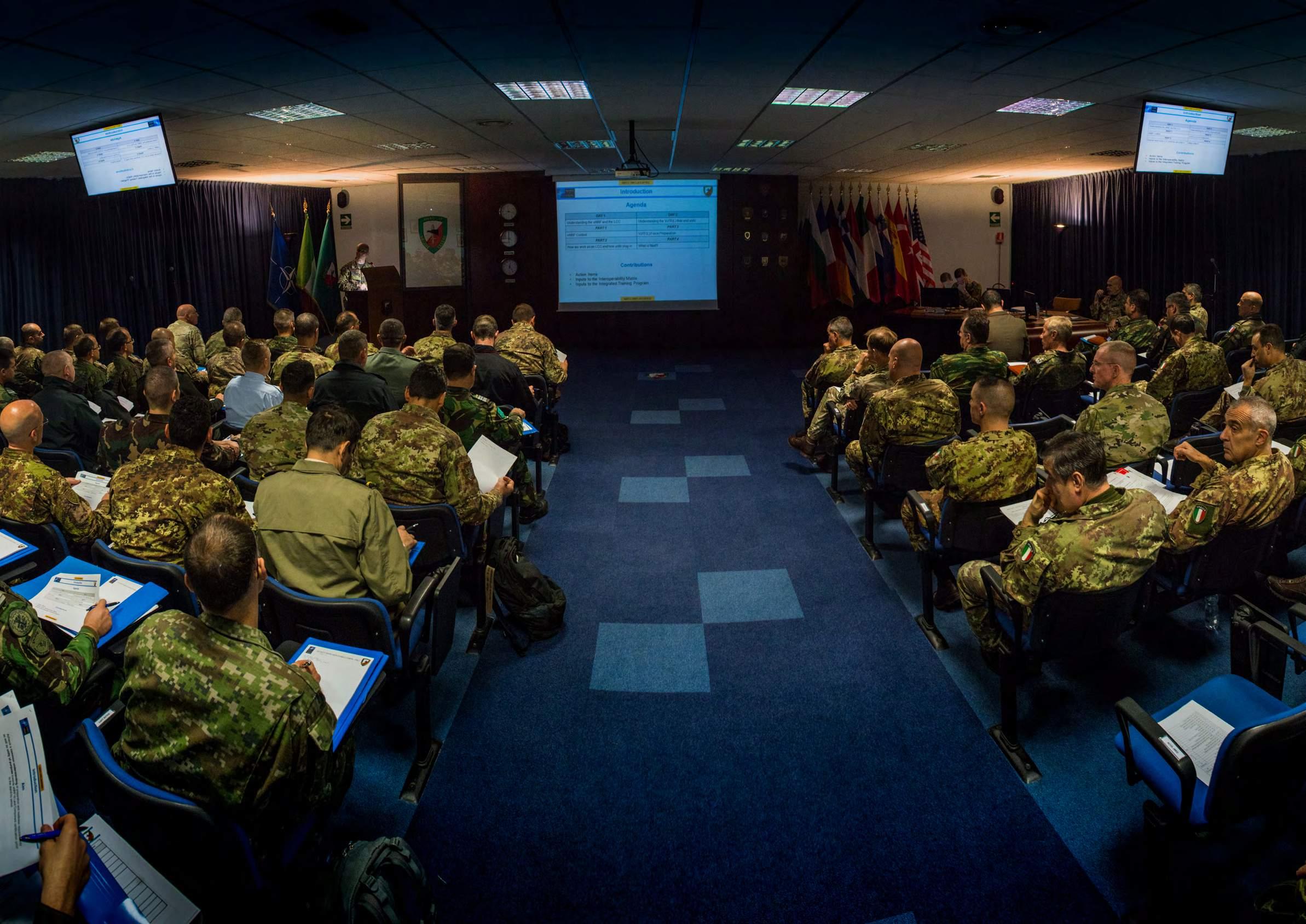
“Ugo Mara” Barracks, 9th November 2016. NRDC-ITA Land Component Commanders Conference. Commanders from all Very High Readiness Joint Task Force (VJTF) Land units, plus the IFFG (Initial Follow On Forces Group) stand-up and stand-down Brigades Commanders, contributed to the preparatory work necessary to a smooth integration and interoperability of all forces.
The event has been organized with the aim of setting up the base for a common understanding of the preparation and readiness requirements to be met for the upcoming certification as LCC as NRDC-ITA takes this challenging responsibility for a stand-by period starting from 1st January 2018.
Scan the code for more information
A new leadership for the NATO Rapid Deployable Corps - Italy
On 29th September 2016, in the presence of the Chief of the Italian Army, Lieutenant General Danilo Errico, local civilian authorities and distinguished guests from sister units, the Change of Command ceremony between Lieutenant General Riccardo Marchiò and Major General Rober-to Perretti took place.
General Marchiò’s time in command was a particularly intense and dynamic period. Thanks to the in-tuition and perseverance of General Marchiò, the NRDC-ITA has been reorganised on a three-pillars framework which, in addition to the “operations” and “support” divisions, also includes an “influence” division, which
is in charge of changing perceptions by fusing kinetic and non-kinetic effects, which play an important role in today’s crisis resolution.
A special thank you was dedicated by General Marchio to the men and women of the Mara and to his Command Group who have enabled the headquarters to successfully operate in a multi-national envi-ronment. Addressing the authorities and representatives of local associations and organizations, Lieutenant Ge-neral Marchiò recalled the positive outcome the presence of the HQ has on the economy and the excel-lence of the bonds that have been created over time with the local communities and academic world.
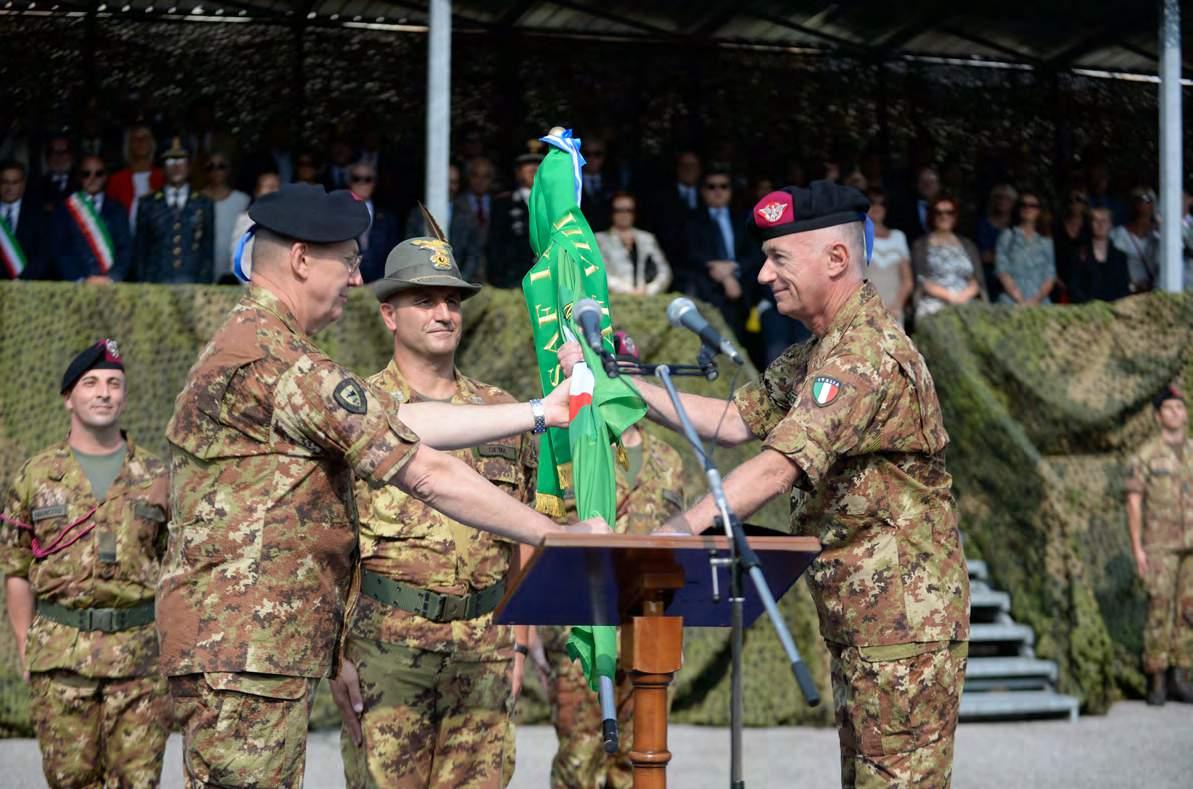
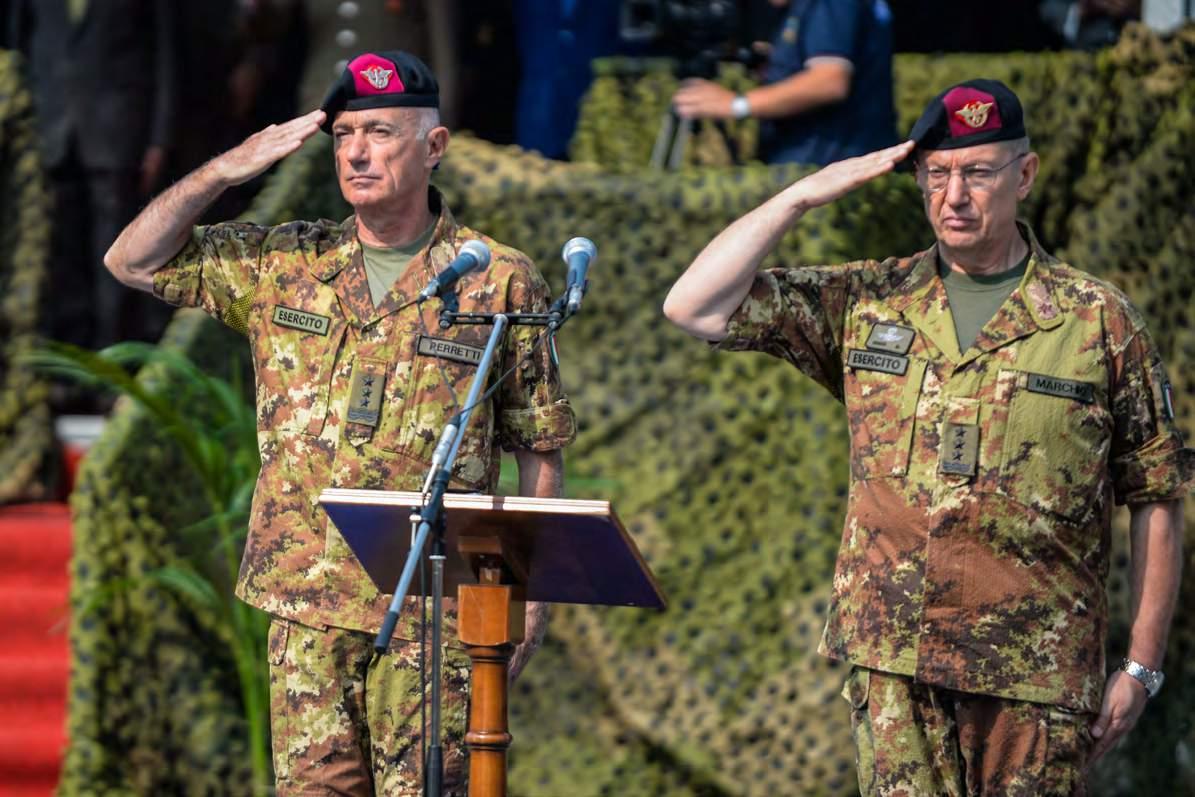
Assuming the responsibility of the HQ, Major General Roberto Perretti, NRDC-ITA incoming Com-mander, thanked the military chain of command for relying on him and wished Lieutenant General Marchiò all the very best for his new appointment as Commander of the Land Forces Command and Army Operations Centre, based in Rome.
events and activities
to maintaining the capability of a deployable Joint Task Force HQ for another stand-by year while moving on the path to validation as a Land Component Command in 2018, in line with the NATO Response Force rotation plan.
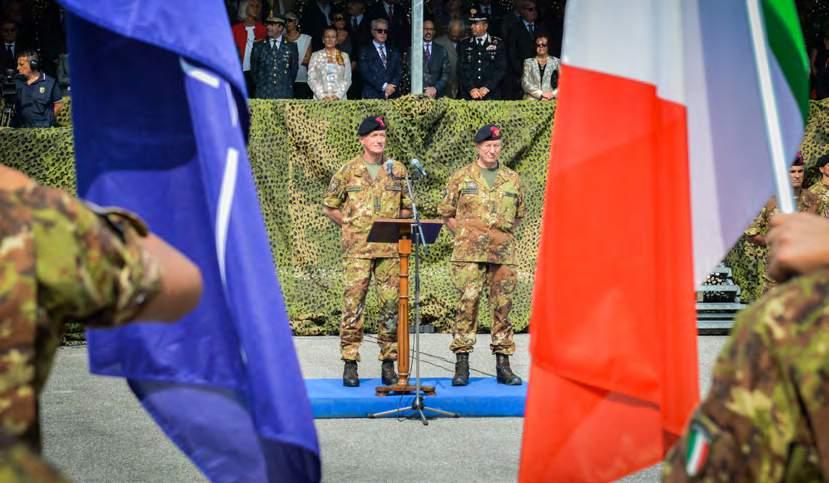

COMMAND GROUP 35
General Roberto Perretti’s time in command will be very busy with
related
The new Command Sergeant Major of NRDC-ITA
NRDC-ITA change of Command had among its natural implication the appointment of a new Command Sergeant Major. On last 3rd November, with a sober ceremony, WO-1 Bortolino GEMA handed over the responsibility, and Chief Warrant Officer Amedeo Russo has sworn in as Command Sergeant Major (CSM) of the NATO Rapid Deployable Corps – Italy.
CSM Russo has held every enlisted leadership position during his career, ranging from team and patrol leader in a mechanized unit up to Joint Terminal Attack Controller and NATO Kosovo Force (KFOR) CSM.
“Being appointed as Command Sergeant Major is for me an honor and a privilege - he said. As newly appointed CSM, I would like to thank the NRDC-ITA Commander, General Perretti and the Italian Army chain of command for giving me this great opportunity as well as thanking my predecessor WO-1 Bortolino GEMA for the excellent job done so far“.
Serving as a Command Sergeant Major demands a core of skills and competencies learned across institutional, self-development, and operational domain.
In this regard, Russo distinguished himself also as a student; winning in 2013 a scholarship at the United Nations Food and Agricultural Organization in Rome where he was involved in research on biofuels and their impact on financial markets. In the same year, he took part in the most important multilateral diplomatic simulation process in the world at the United Nations HQ in New York (Special Committee on Peacekeeping Operations), where he studied the early stages of the crisis in Mali.
CSM Russo is accountable for the mentoring of all of NRDC-ITA enlisted servicemen and women, for promoting their professional development and maintaining high-quality standards and discipline while giving a boost to esprit de corps.

To CSM Amedeo Russo a warm welcome on board from all NRDC-ITA staff.
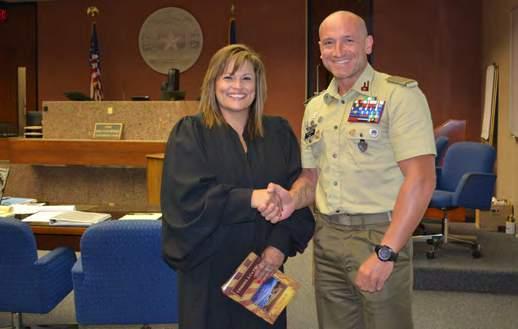
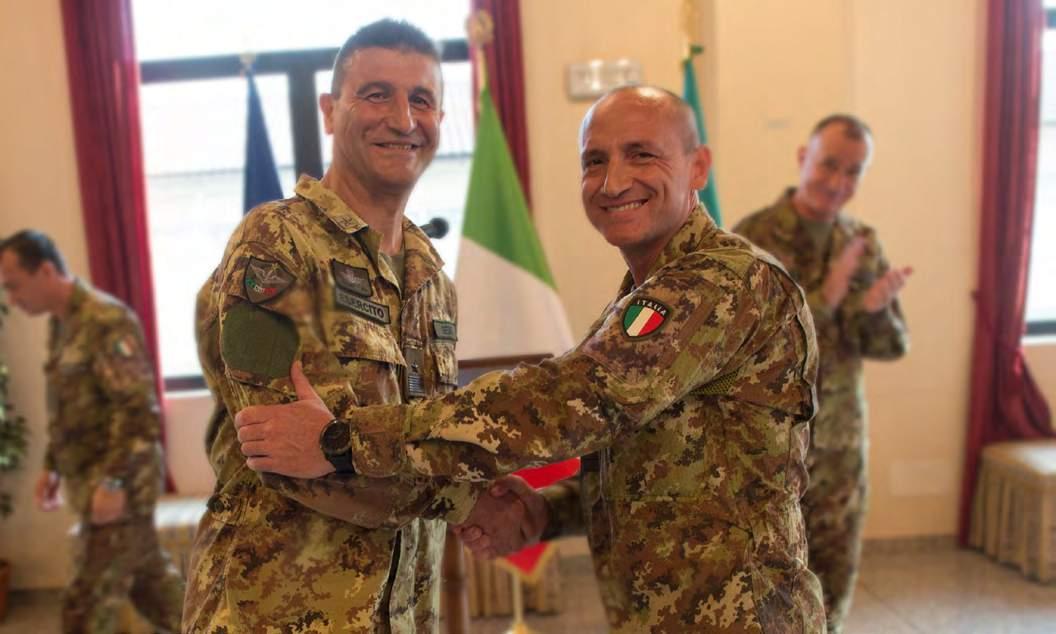

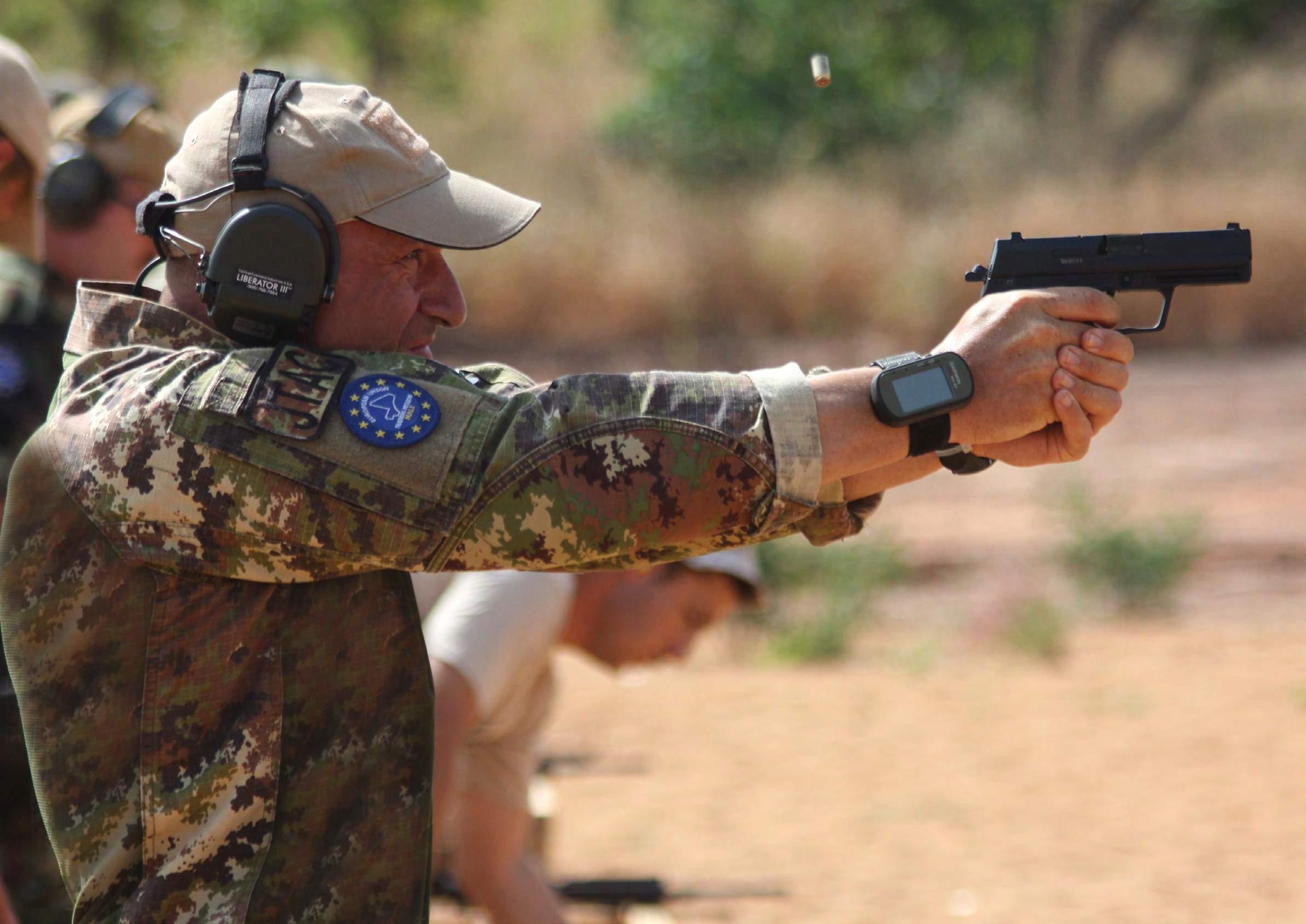
36 COMMAND GROUP 37 攀
WO Russo visiting the Texas County Court House
3rd November 2016, “Ugo Mara” Barracks NCO’s Club. WO1 Gema (left) handing over responsibility to WO Russo
VISITS & EVENTS
receveis LANDCOM Commander visit
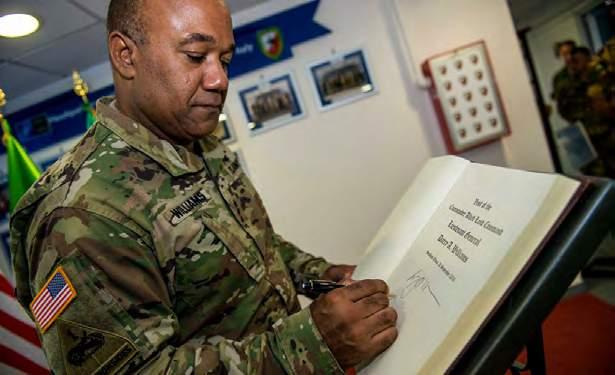
20th September 2016 - At Ugo Mara barracks, NRDC-ITA former Commander, Lieutenant General Riccardo Marchiò, welcomed Lieutenant General Darryl A. Williams, Commander of NATO Headquarters Allied Land Command in Izmir, Turkey. After receiving a “Bersaglieri” honour guard he was updated, by Major General Giovanni Manione, on the NRDC-ITA’s efforts at maintaining readiness and capability so that NATO Stand-by standards are met. NATO Rapid Deployable Corps Italy is now on the road to Exercise Summer Tempest, where it will be validated as a NATO Land Component Command (LCC) under Allied Land Command lead.The visit, aimed at strengthening NRDC-ITA and LANDCOM cooperation, is a further step towards improving synchronization, effectiveness and interoperability within the Alliance.
eNRF Support Concept Seminar at NRDC-ITA
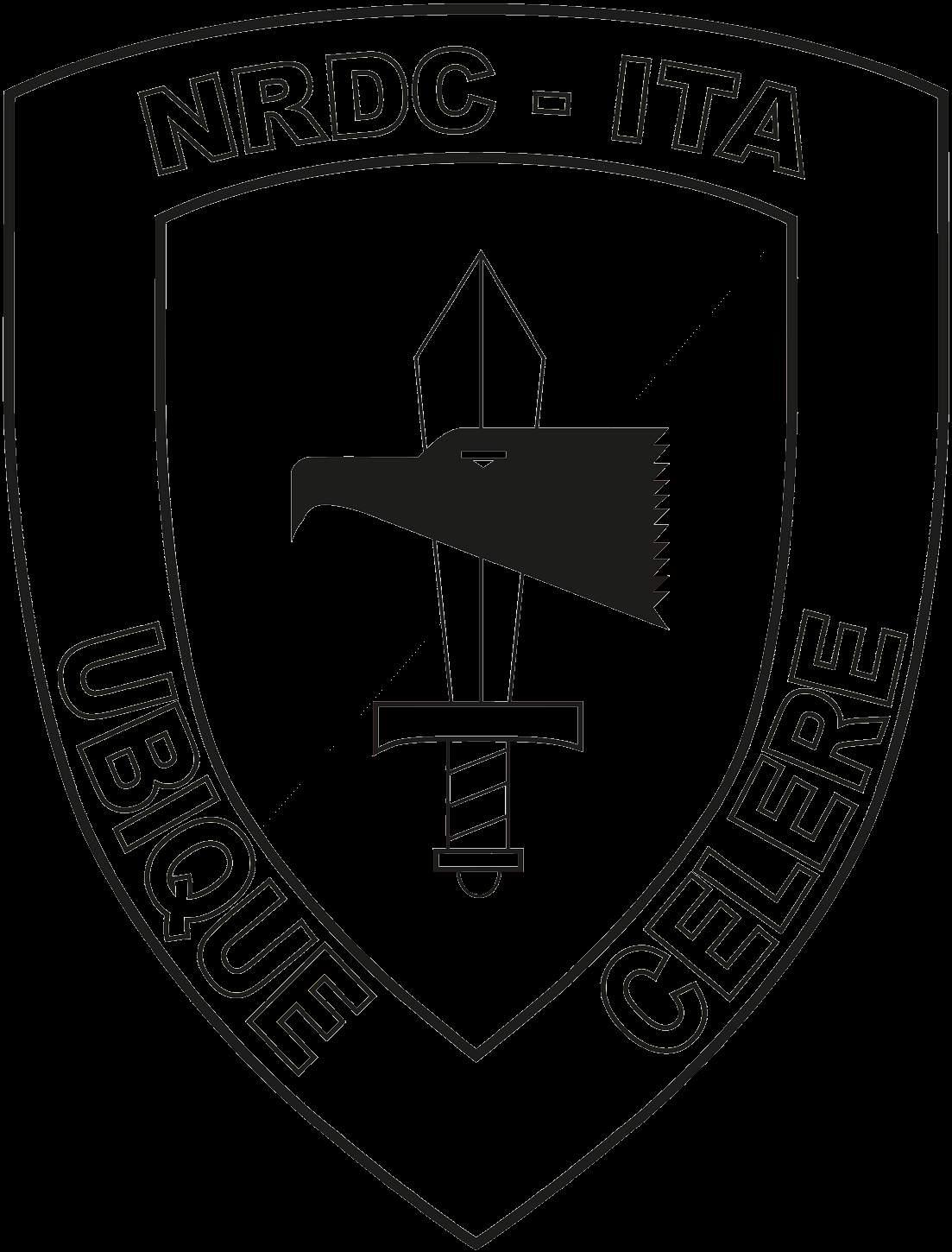
From 24th to 28th November 2016, as part of the build up to Exercise SUMMER TEMPEST/ EAGLE METEOR 16, NRDC-ITA staff and over a hundred augmentees from subordinate units and brigades manoeuvre, undertook a Battle Staff Training (BST) week period. BST provided the opportunity for NRDC-ITA Command Group and Staff to rehearse the LCC decision making process through boards and working group, and to outline related products and outputs, in view of the upcoming exercise.
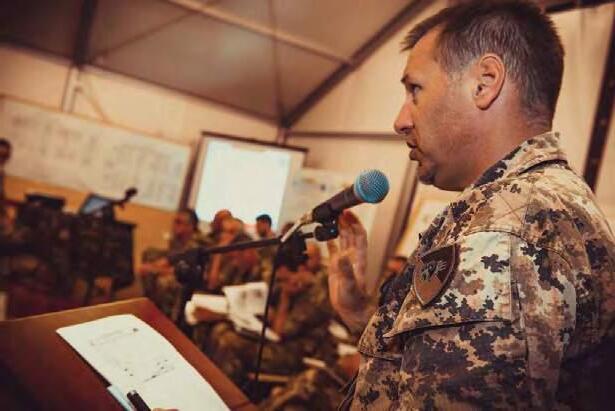
SUMMER TEMPEST / EAGLE METEOR 16 fall under the preparation NRDC-ITA is undergoing for assuming the role of LCC as part of the NRF (NATO Response Force), so exercising interoperability and Command and Control over the VJTF (Very High Readiness Joint Task Force) or other combat units/multinational forces. In 2014, NATO Allies decided to enhance the NRF (NATO Response Force) by creating a “spearhead force” within it, known as the Very High Readiness Joint Task Force. This enhanced NRF is one of the measures of the Readiness Action Plan (RAP), which aims to respond to the changes in the security environment and strengthen the Alliance’s collective defence.
NRDC-ITA 13th Plenary Meeting
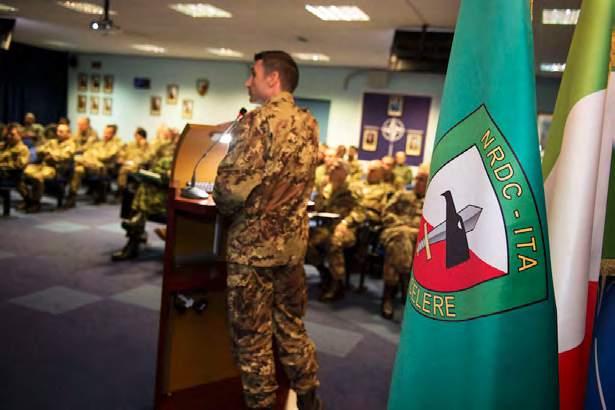
3-4th November 2016 - The NATO Rapid Deployable Corps Italy hosted “The Enhanced NATO Response Force (eNRF) Support Concept” Seminar. This two-day seminar, chaired by Chief of Support Division, Brigadier General Luca FONTANA, represented an excellent forum to discuss the concepts underpinning the support capabilities of NRDC-Italy in its role of Land Component Command as the HQs takes this responsibility starting from January 2018. Lively discussions and brainstorming briefings have encouraged representatives of the NATO Support community to share ideas, initiatives, lessons identified and “best practices”.This event represented a very good occasion to promote a common understanding of the Support Division role in eNRF operations, as well as to further discuss possible challenges emerging from the implementation of relevant NATO doctrine. The Land Component Command is part of the NATO Response Force (NRF), a highly capable joint multinational force able to react in a very short time to the full range of security challenges. It represents the main military instrument of the Alliance for a rapid military response, either within the boundaries of the Collective Defence or the so-called Crisis Response Operations (conflict prevention and resolution, and crisis management).
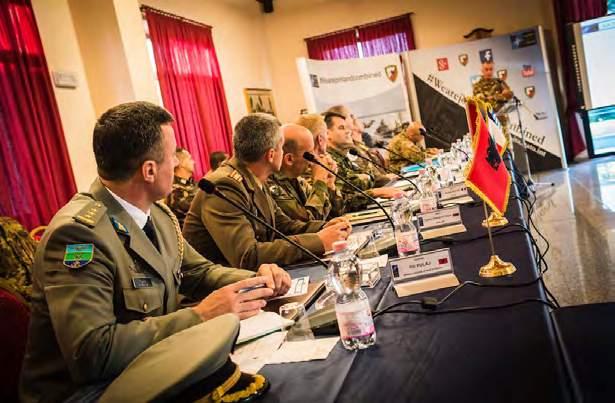
20th October 2016 - The 13th Plenary Conference of NRDC-ITA took place at “Ugo Mara” barracks, under lead of the Italian Defence General Staff. During the meeting, guests from the 12 Troops Contributing Nations to NRDC-ITA met to check the current structure and functions of the HQ, to provide “fine tuning” changes, in line with doctrinal evolution and lessons learned that could add or amend tasks and procedures. This edition of the event takes place during the Joint Task Force HQ (JTFHQ) second consecutive year of stand-by period, taking into consideration that NRDC-ITA will assume role as enhanced NATO Response Force (eNRF) Land Component Command (LCC) HQ in 2018.To achieve the Joint Command and Control Capability (Deployable), the NRDC-ITA 3-pillars structure (Operations, Logistics, Influence) was designed to cope with the stand-by period phase as JTFHQ, retaining at the same time the flexibility to ensure the transition to LCC or Corps role as required.

38 39
NRDC-ITA
NRDC-ITA on the way to LCC
NIWIC solidarity for the victims of Central Italy earthquake
On 10th of November the NRDC-ITA Women’s International Club (NIWIC) organized an “Amatriciana Day” at Ugo Mara barracks to keep attention alive on the August earthquake which hit central Italy.
The International Staff serving at NRDC-ITA had a taste of “Amatriciana bucatini”, donating part of the income and part of NIWIC funds to the Italian Civil Protection Department.
Mrs Elisa Imbergamo, a NIWIC member, clarified that they organized this charity event to raise money for the earthquake victims in central Italy, in particular the town of Amatrice and its surroundings. The importance of keeping the spotlight on the need for mutual aid and support is one of the main institutional goals of our club. NATO women felt deeply the needs of the evacuated people, above all because the winter was near. NIWIC is a recognised voluntary membership association within the NATO Rapid Deployable Corps Italy Morale & Welfare programme. Every spouse or partner of a member serving in this HQ can participate in our activities. NIWIC routinely organizes several activities and multinational events in order to bring together the various nationalities involved in NRDC-ITA by fostering good relationships and mutual understanding.
Examples are fund-raisers for charitable purposes, Italian conversational classes, a Christmas Fair each year, International Coffee, cultural trips, cookery demonstrations, visits to art galleries, museums, villas, gardens, local markets and the like.

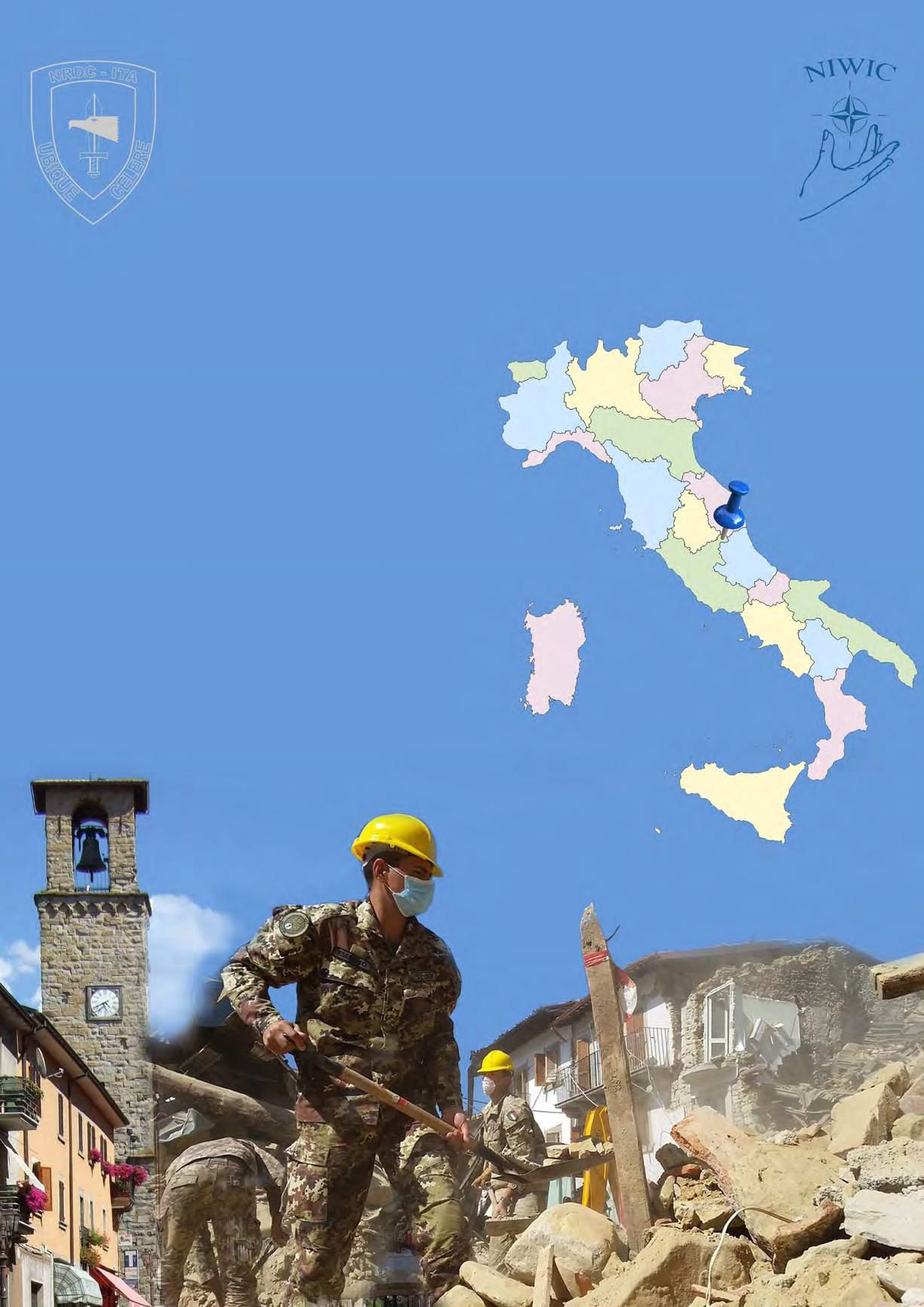

NRDC-ITA on two wheels at EICMA 2016

WO ITA (A) Italo BOATO, has been assigned to NRDC-ITA in June 2015 as staff assistant into the Operation Division, now he tends to NRDC-ITA website and Social Media.
Rho (MI), 10-13th November 2016. The NATO Rapid Deployable Corps-Italy and the Italian Army were present at the International Bicycle and Motorcycle Exhibition of Milan (EICMA2016) in a dedicated area where it was possible to jump on a bike-riding simulator and enjoy a selection of motorcycles from the Italian Army Museum of classic military vehicles in Rome. “It is nothing new, not a new concept at all” – said Brigadier General Christos Drivas, NRDC-ITA Joint Logistic Support Group Commander, bike rider and enthusiast - “from a military point of view, in particular circumstances, it can be safer and more effective to be lighter and faster when approaching hostile forces or during reconnaissance and scouting missions”. Military history proves bicycles and motorcycles have been successfully used in military operations: in fact militarized ones have allowed fast reconnaissance and communication between the front lines and rear areas.

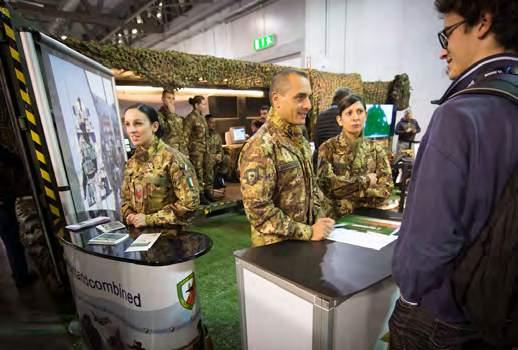
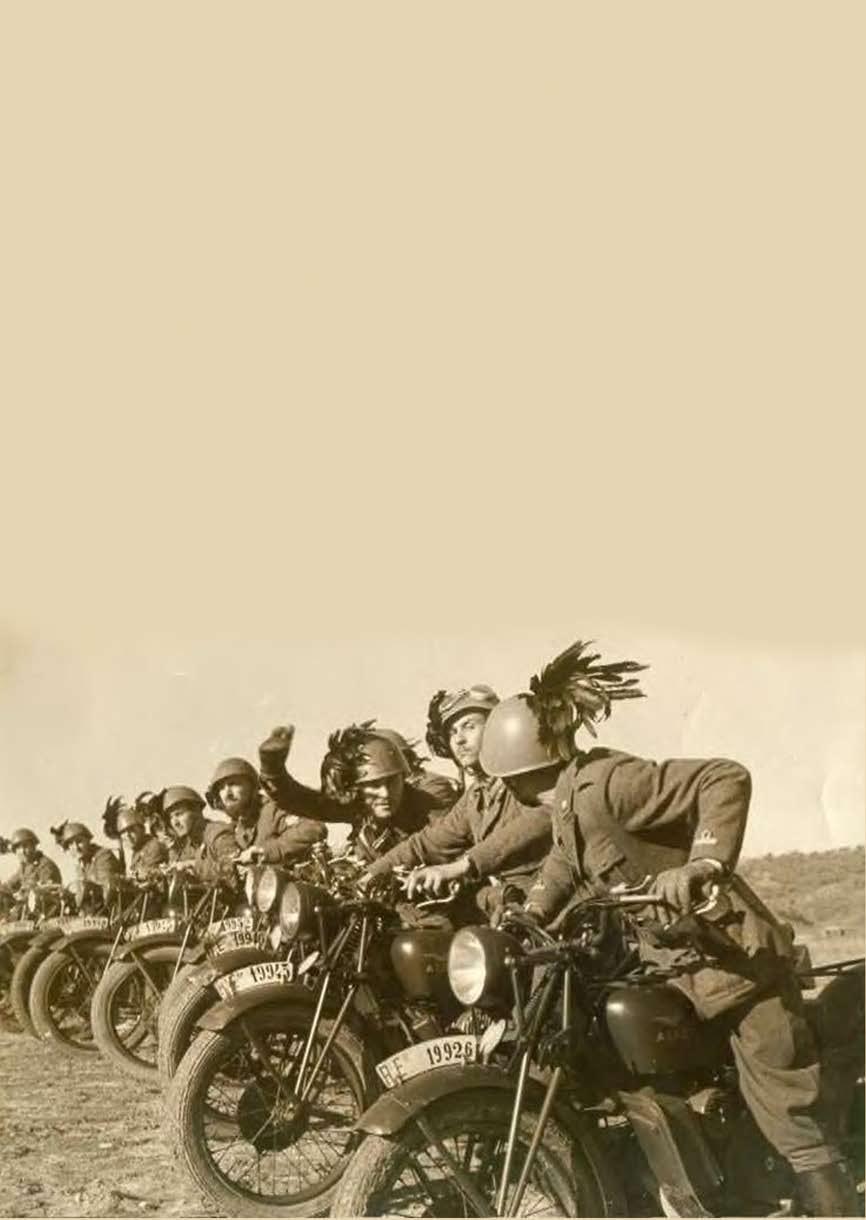

Bike mounted Bersaglieri troops during WW2 41 COMMUNITY 40 攀
EICMA 2016: NRDC-ITA stand
A champion among NIWIC members: Mrs. Valentina Superchi wins the Nordic Walking Italian Championship 2016

NIWIC: NRDC-ITA Women’s International Club
On Saturday 15 October 2016 in San Gusmè (Siena province, Tuscany region) the last round of the National Nordic Walking Championship took place (Nordic Walking is the newborn discipline inside the Italian Federation of Athletics “ FIDAL”); the Championship consisted of six rounds in different Italian locations.
Civilian Valentina Superchi, our Nordic Walking representative member of NRDC-ITA Running Club, competed in the women’s 5 km race, along the hilly vineyards of the Chianti district.
She achieved another brilliant victory (the sixth victory out of six rounds), and as a consequence she was awarded the title of Italian Nordic Walking female Champion 2016!
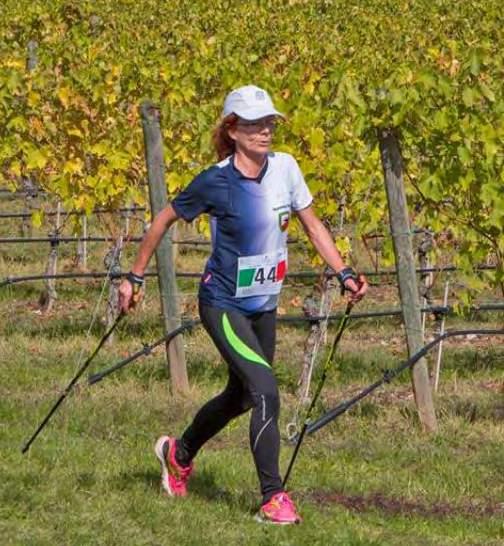

NRDC-ITA Running Club is proud to boast the strongest Italian Nordic Walking female. Outstanding performance, you deserve it Valentina!
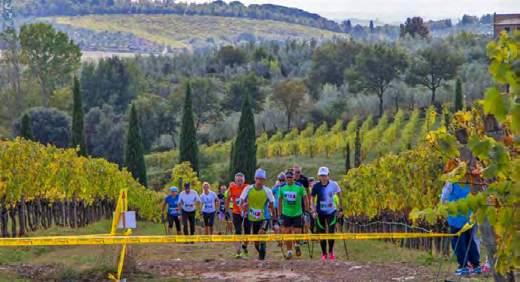
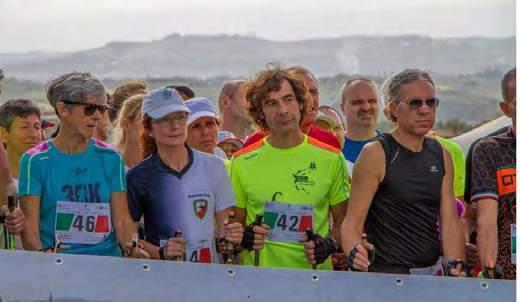
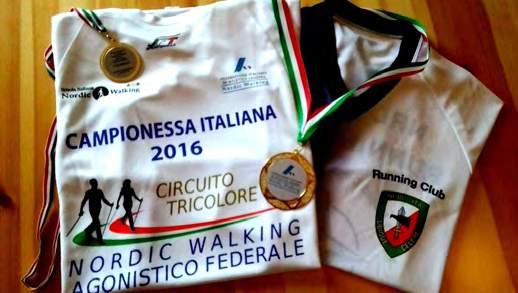
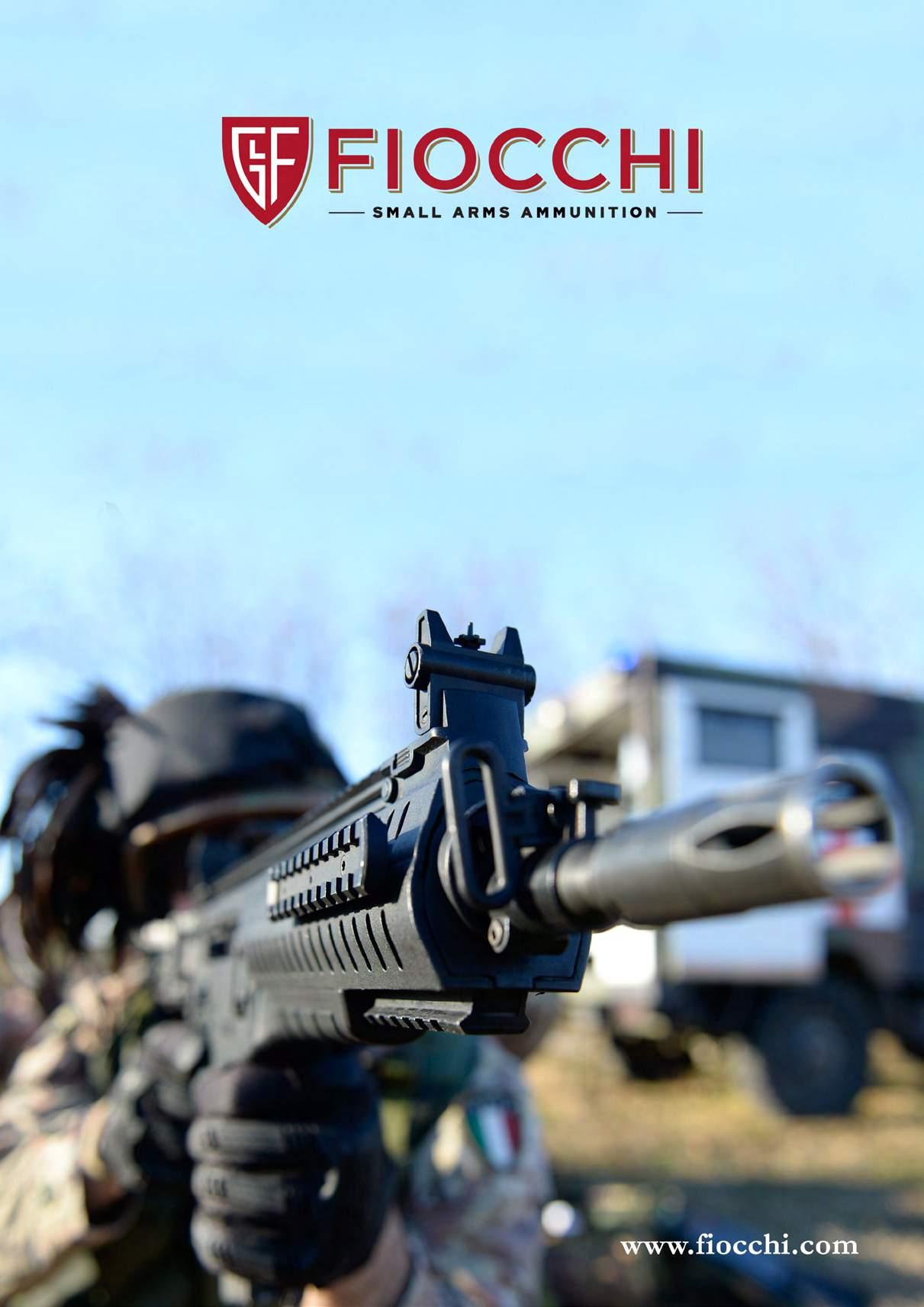
COMMUNITY 42 攀
























 Home Station Training platforms using an Integrated and Federated combat scenario
Home Station Training Battlefield Management System
Integrated Combat Training System: Mission AAR on MRA
Integrated Combat Training System: Holo Table
Home Station Training platforms using an Integrated and Federated combat scenario
Home Station Training Battlefield Management System
Integrated Combat Training System: Mission AAR on MRA
Integrated Combat Training System: Holo Table



















 Solbiate Olona, “Ugo Mara” Barracks gymnasium. A Combat Military Method session at NRDC-ITA: one of the professional skills the Italian contingent is keen on.
Solbiate Olona, “Ugo Mara” Barracks gymnasium. A Combat Military Method session at NRDC-ITA: one of the professional skills the Italian contingent is keen on.




 FLt. Col. NLD (A) Jürgen MUNTENAAR, SO1 Med Plans & Coord
FLt. Col. NLD (A) Jürgen MUNTENAAR, SO1 Med Plans & Coord































